Fantasy Books
What I’ve Been Listening To: February, 2025
 I haven’t shared what I’ve been listening to, since November. How have you lasted this long??? Let’s rectify that right now, shall we?
I haven’t shared what I’ve been listening to, since November. How have you lasted this long??? Let’s rectify that right now, shall we?
ISAAC STEELE & THE FOREVER MAN – Daniel Rigby
This is the first of two originals produced by Audible as The Isaac Steele Chronicles – it’s not a print or digital book turned into an audiobook.
Rigby wrote it, and he narrates as well. He sounds a lot like Cary Elwes, which totally works for me (you want a great audiobook – Elwes’ memoir about the making of The Princess Bride, with several cast members reading their own parts, is superb).
It’s NSFW – I don’t play this one out loud in the office. I’d say ‘raunchy.’ So, take that for what it is.
Steele works for Greatest Britain’s Department of Clarification. He’s basically a police detective for the intergalactic British government. Greatest Britain is about as beloved as Britain was during the Colonial Era. Steele is never the most popular guy in the room. He also drinks, does drugs, has unresolved parental issues, and he’s not exactly a stickler for the rules. A scifi version of the hardboiled private eye trope.
He can be his own worst enemy, but there are plenty of other people, robots, and monsters, willing to make his life worse for him. He has a robotic partner, Timothy, who sulks in his tent like Achilles, after getting benched on the case. Steele is less than gracious in welcoming his new, temporary partner.
This is campy fun, without being silly. I can imagine that there are some seriously devoted fans, on board for more.
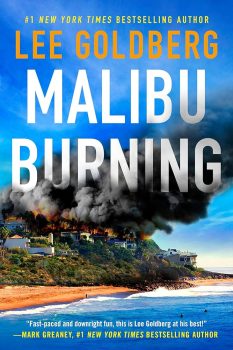 It came out in 2021, and a sequel, Isaac Steele and the Best Idea in the Universe, followed up in 2024. I’m gonna listen to that after I finish this first one.
It came out in 2021, and a sequel, Isaac Steele and the Best Idea in the Universe, followed up in 2024. I’m gonna listen to that after I finish this first one.
Also, I listened to Larry Correia’s three-book Lost Planet Homicide series. I don’t care how you feel about him, or David Eddings, or Josh Whedon (I’m re-watching Firefly right now: man, Fox messed up with that one), or Orson Scott Card, or Neil Gaiman, or whoever. We all make our own decisions on what we watch and read (and what Eddings did hung a bit over my re-read of The Belgariad, which I still love). And the Hugos matter not a whit in my life. If you are bothered I listened to Correia, just move along, or quit reading me, or whatever. Let’s be adults.
Lost Planet Homicide is the title of the first book of the series of the same name. It’s a hardboiled cop (detective) book set in space. It’s definitely tongue-in-cheek, and I get if some people think it’s too over-the-top. But it’s intended to be, and I think it’s more homage than parody.
A colony ship went off course and ended up a thousand light years from Earth. Croatan has five mountain peaks the rise above a fatal cloud of acid that blankets the world. This is not a fun place. Corporations and criminal syndicates call the shots. Murder can be bought off usually. When it can’t, DCI Lutero Cade is called in to…gasp…actually solve the crime! If you think Chandler’s Philip Marlowe and Bay City was cynical, welcome to Five Peaks.
The stakes are epic, and the stories link together, but also stand-alone. Oliver Wyman does hardboiled PI pretty well. Good choice.
I’m a fan of Isaac Asimov’s R. Daneel Olivaw books (I wrote about them here). So, while I don’t do much scifi (which relegates me to the kiddie table at Black Gate gatherings), I don’t mind scifi cop/PI stuff. Both of these were fun listens, with different vibes.
MALIBU BURNING – Lee GoldbergI’m a huge fan of Lee Goldberg’s Monk books. I’ve also listened to all but the most recent Eve Ronin novel, and that is a terrific buddy cop series, set in Hollywood. It occasionally borders on as dark as I get (for a hardboiled fan, I’m a little squeamish), but never goes too far. Can’t wait to get to the most recent one, Dream Town.
Anywhoo, book three of his Sharpe & Walker series is coming in April. Walter Sharpe is an arson investigator, and his new partner is former US marshal Andrew Walker. And this 2023 title about central CA on fire, certainly is timely.
Lee was a terrific screenwriter. Go look up his IMDB page. He and his writing partner William Rabkin penned a couple excellent episodes for A&E’s A Nero Wolfe Mystery. But now Lee is a regular tenant on the NY Times’ best-seller list. He writes fast-paced, absorbing thrillers and crime dramas. I haven’t even managed to get around to his hit series co-written with Janet Evanovich.
I think you could pick any of his series’ (and you can never go wrong with Monk!) and be glad you did. I’m a fan of pulpster Stewart Sterling (real-name, Prentice Winchell). Which includes his Fire Marshal Pedley books (NY Harbor cop Steve Kosko is also fine ‘unconventional’ hardboiled PI). So, a current series, about an arson investigator, written by a top flight novelist, is right up my alley. Definitely recommended.
A POINT OF LAW – John Maddox RobertsBook ten of thirteen in Roberts’ fantastic SPQR series of mysteries set in Ancient Rome. I’ve talked about them here. I absolutely love these stories, and John Lee is the perfect narrator. Click on the link for more info. I have not been disappointed with a single book so far, and I am spacing out the remaining three (Roberts died last year).
He was long working on the next book in the series. I hope they decide to find somebody of quality and have them finish it (Scott Oden?). But I’m really glad I discovered these, late to the party as I was. It sparked an interest in Ancient Rome stuff again. For example, I went and read Michael Kurland’s Roman mysteries short story collection.
ROMAN BLOOD – Steven Saylor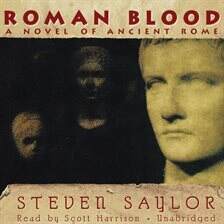 I have written about Saylor’s fictional recounting of the real-life Austin Servant Girl Annihilator. You read that, RIGHT? Saylor is best known for his Roma Sub Rosa mysteries set in…you guessed it, Ancient Rome!
I have written about Saylor’s fictional recounting of the real-life Austin Servant Girl Annihilator. You read that, RIGHT? Saylor is best known for his Roma Sub Rosa mysteries set in…you guessed it, Ancient Rome!
With the Roberts audiobooks fanning the flames; and having read Kurland’s stories: I was ready for more. Saylor was a no brainer.
He has written over a dozen books featuring Gordianus the Finder. Now, he ‘went back’ and wrote a prequel trilogy. I tried to start the first one, The Seven Wonders. Stephen Plunkett was unlistenable. It felt like he was trying to read the entire thing in a monotone. I had to quit.
However, I still wanted to give Saylor a try, so I got the first ‘proper’ Gordianus book, Roman Blood. Scott Harrison was much better as a narrator. I completed it and immediately moved on to Arms of Nemesis.
I like Gordianus. He’s not a public office holder doing official investigations, like Decius Caeceillius Metellus the younger. Gordianus is essentially a private eye. His bartering to get a bigger fee early in book two was amusing. As with most private eyes, he finds himself in peril more than once. And he ruffles important feathers.
I like the authenticity of the Roman world in Saylor’s and Roberts’ books. It really creates a vivid background. And while I love my Hammett and Nebel, the ancient world setting is pretty cool. Roman Blood taker place in 80 AD, in Rome.
I definitely recommend checking out Saylor, and Roberts, if this kind of thing appeals to you.
THE TROJAN WAR: A NEW HISTORY – Barry StraussSo, last week’s post was all about my life-long love of the Trojan War. Which is rooted in the Iliad. I listened to this non-fiction book on the topic, which got me fired up to write last week’s entry. This was a g
I am not really interested in the spate of Trojan War novels (especially the romance ones. Ugh). Though I mentioned last week, being a huge Rex Stout fan, I like The Great Legend. I’ve long intended to read some David Gemmell, and his trilogy of Trojan War novels seems like a no-brainer for that.
But I’m into the original myth, and the study of the war, and the real-life history around it.
Been awhile since I did a non-fiction book. I learned some things. It mixed content from The Iliad, with information related to it. I learned about battering rams (apparently the real ones weren’t like Grond…), sea power, the Greek city-states: just lots of interesting info. And, I always like hearing about Iliad stuff.
This was a good listen, letting me revisit the Trojan War. Sitting and reading this would have been more difficult, for a couple reasons. But the audiobook totally worked.
What I’ve Been Listening To: November, 2024
What I’ve Been Listening To: Sepetember, 2024
What I’ve Been Listening To: August, 2024
What I’ve Been Listening To: July, 2024
What I’ve Been Listening To: September 2022
May I Read You This Book?

Bob Byrne’s ‘A (Black) Gat in the Hand’ made its Black Gate debut in 2018 and has returned every summer since.
His ‘The Public Life of Sherlock Holmes’ column ran every Monday morning at Black Gate from March, 2014 through March, 2017. And he irregularly posts on Rex Stout’s gargantuan detective in ‘Nero Wolfe’s Brownstone.’ He is a member of the Praed Street Irregulars, founded www.SolarPons.com (the only website dedicated to the ‘Sherlock Holmes of Praed Street’).
He organized Black Gate’s award-nominated ‘Discovering Robert E. Howard’ series, as well as the award-winning ‘Hither Came Conan’ series. Which is now part of THE Definitive guide to Conan. He also organized 2023’s ‘Talking Tolkien.’
He has contributed stories to The MX Book of New Sherlock Holmes Stories — Parts III, IV, V, VI, XXI, and XXXIII.
He has written introductions for Steeger Books, and appeared in several magazines, including Black Mask, Sherlock Holmes Mystery Magazine, The Strand Magazine, and Sherlock Magazine.
Review: Tideborn by Eliza Chan
 Buy Tideborn
OFFICIAL AUTHOR BIO: Eliza Chan is a Scottish–born Chinese–diaspora author who “writes about East Asian mythology, British folklore and reclaiming the dragon lady, but preferably all three at once”. Eliza’s work has been published in The Dark, Podcastle, Fantasy Magazine and The Best of British Fantasy, and her non-fiction has appeared on Tor.com. She lives in the north of England with her partner and young child.
Buy Tideborn
OFFICIAL AUTHOR BIO: Eliza Chan is a Scottish–born Chinese–diaspora author who “writes about East Asian mythology, British folklore and reclaiming the dragon lady, but preferably all three at once”. Eliza’s work has been published in The Dark, Podcastle, Fantasy Magazine and The Best of British Fantasy, and her non-fiction has appeared on Tor.com. She lives in the north of England with her partner and young child.FORMAT/INFO: Tideborn will publish on March 25th, 2024 from Orbit Books. It is 384 pages long and will be published in hardcover, ebook, and audiobook formats
OVERVIEW/ANALYSIS: A selfless act may have saved the citizens of Tiankawi, but the city is not out of danger yet. A deadly force is heading towards the city, and this time, it may be unstoppable. Nami the water dragon must lead an expedition out into the open ocean in an attempt to stop the disaster before it's too late. But dangers lurk within the city as well. Tensions between fathomfolk and humans are even worse than before. If Mira the half-siren doesn't find a way to unite the people, the city may tear itself apart from within before any outside force can destroy it.
Tideborn is a bit of a muddled mess as it tries to make sense of a city crippled by prejudice as an impending disaster approaches. Smartly, the magic that saved the city from destruction at the end of Fathomfolk did not also magically solve racism overnight; if anything it made it worse, causing even more fracturing in a populace grappling with dramatic change. But now nearly all of the protagonists' victories are tied to solving racism in some way, and they have to do it in the space of one book.
The author has mixed success in portraying effective resolution of these tensions. Ironically, Nami the water dragon's storyline, which I was less interested in overall, has perhaps the most realistic storyline. She is sent on a mission on a boat with roughly a dozen other people, both human and fathomfolk. Within this microcosm is a range of prejudices and acceptance; in order to achieve her mission, Nami has to find a way to get her crew to set aside their fears and prejudices about each other, while also dealing with her own insecurities. It's not an easy task, but winning the hearts and minds of a handful of people is much easier than that of a whole city.
The rest of the characters are left to deal with the political turmoil in Tiankawi, and this happens less effectively. On the one hand, this makes sense. You can't make the population of an entire city set aside their individual fears and hatreds with the snap of your fingers. But that also means that it's hard to get a satisfying sense of victory. Mira and her allies can triumph over some figureheads, but they really haven't solved the root of the problem by the end of the story. It leads to a somewhat messy finale as none of these internal problems are really resolved, even if the biggest threat was eliminated.
The lack of a cohesive end goal is, at the end of the day, what causes this story to feel a bit scattered. Nami has a clear goal in her mission, but Mira's is a bit more nebulous. She is basically simply trying to hold the city together long enough for either Nami to succeed or for the city to be destroyed. The result is Mira is dealing with several different forces trying to undercut both her and any attempts at peace, leaving her fighting enemies off on all sides. Cordelia the sea-witch, on the other hand, has an even less clear goal, turning her aims this way and that in pursuit of her personal whims.
(And yes, Nami's toxic boyfriend is still around, and yes, you will still want to drop kick him into the sun.)
CONCLUSION: It's hard to sum up my final thoughts on Tideborn. On the one hand, I really appreciate the themes the author is grappling with. But because these themes don't have an easy answer, there's no clear resolution at the end of the day. Yes, some villains are thwarted, but as the story shows, that doesn't dissolve the beliefs of their followers. While I do enjoy the world the author created and the characters that inhabit it, the city at the heart of Tideborn is perhaps too realistically riddled with prejudice for the duology to have a satisfying resolution.
Alternate Londons, the Future of Lotteries, and Colony Ships: January-February Print Magazines
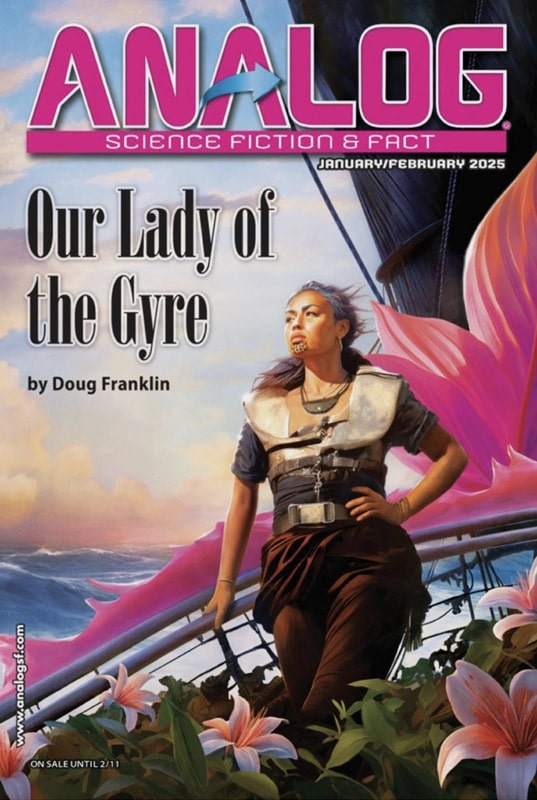
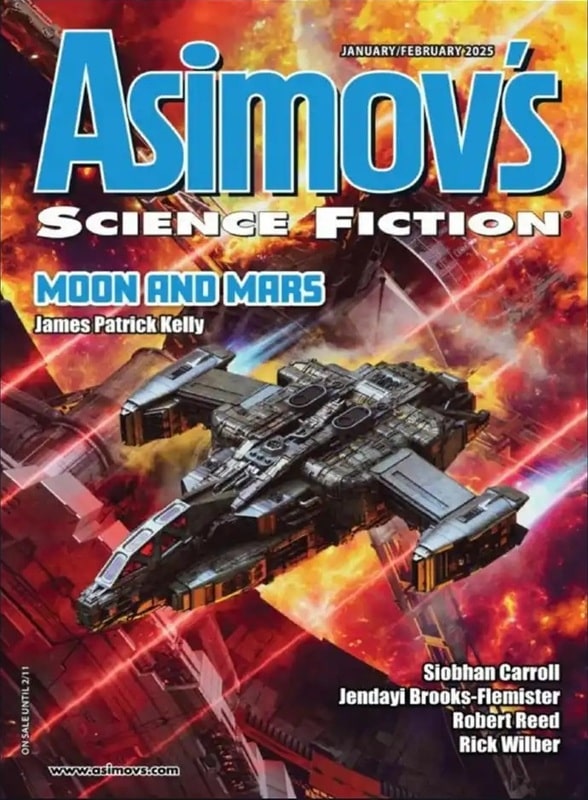
January-February 2025 issues of Analog Science Fiction & Fact and Asimov’s Science
Fiction. Cover art by Tomislav Tikulin (for “Our Lady of the Gyre”) and Shutterstock
Still no sign of the next issue of The Magazine of Fantasy & Science Fiction, which is disheartening. That leaves us with only two issues published last year (Winter 2024 and Summer 2024), and no hint when the next one might arrive. I’m hearing rumors that the magazine has been sold, but I’ve been unable to confirm that, so for now it’s just gossip.
But we’ve got issues of Asimov’s Science Fiction and Analog Science Fiction & Fact in hand, and they’re just as enticing as usual, with contributions from John Shirley, Sean McMullen, Mark W. Teidemann, Steve Rasnic Tem, Paul Di Filippo, Sakinah Hofler, James Van Pelt, James Patrick Kelly, Siobhan Carroll, Robert Reed, Faith Merino, Matthew Kressel, Rick Wilber, Jane Yolen, Kendall Evans, and many more.
The issues contain a new Great Ship tale by Robert Reed, a new Unsettled Worlds story by Siobhan Carroll (which Sam Tomaino calls a “suspenseful, exciting tale”), a new novelette “Rejuve Blues” from John Shirley (which Victoria Silverwolf labels “a suspenseful crime story and psychological study”), and the last installment in James Patrick Kelly’s trio of stories about Marishka Volochkova, “Moon and Mars,” which Sam proclaims is “probably another Nebula nominee.”
Victoria Silverwolf at Tangent Online enjoyed in the latest Analog.
“Our Lady of the Gyre” by Doug Franklin mostly takes place aboard a sea vessel that fights excess carbon dioxide in the atmosphere via bioengineered diatoms. The protagonist, who communicates with an artificial intelligence orbiting the Earth, takes two young people on his ship and faces a dangerous storm… a very dense work of fiction that requires careful reading. At first, it is difficult to tell what’s happening or what this future world is like, but patient readers will be rewarded with a vivid and imaginative tale with appealing characters.
The novelette “Rejuve Blues” by John Shirley features an elderly couple who win a lottery that offers them the chance to be young again. The man runs into trouble with criminals, while the woman, thinking he has left her, returns to her former activity as a fighter against the Taliban. The author creates a complex and convincing future that is neither utopian nor dystopian… a suspenseful crime story and psychological study.
The main character in “Go Your Own Way” by Chris Barnham accidentally discovers a way to travel into alternate versions of London, some very similar to the familiar one and others wildly different. He falls in love in one of these parallel worlds, but the arrival of an alternate version of himself causes complications. The plot is that of the eternal triangle, in which two of the people involved are the same person. (One might call it an isosceles triangle.) The various parallel Londons are described only briefly, and are far more interesting than the love story…
In the novelette “Prince of Spirals” by Sean McMullen, conspirators kidnap a forensic anthropologist and force him to study samples from the skeletons of two bodies thought to be the so-called Princes in the Tower, heirs to King Edward IV of England… The motive is to determine if either Prince survived to have descendants, giving members of the conspiracy a claim to the throne… This is a suspenseful crime story, with intriguing speculative technology and an interesting look at the techniques used by forensic anthropologists.
At first, “Quest of the Sette Comuni” by Paul Di Filippo seems like pure fantasy, as a female satyr and a golem set out to rescue a princess from a wizard, in order to free their master from his imprisonment by a sea-dwelling queen. It soon becomes clear that the golem is actually a machine and the other characters are the result of advanced biotechnology. The setting is richly imagined, from an underwater Venice inhabited by amphibious humans to an antagonist who has made himself resemble the Jabberwock from Lewis Carroll’s famous nonsense poem. Although not a comedy, the story has sufficient amount of subtle wit to draw the reader into its colorful world.
The magazine concludes with the novella “Apartment Wars” by Vera Brook. The setting is Poland in 1979. The widow of a scientist faces the possibility that she will be forced out of her relatively large apartment by the government because she lives alone. She expects her daughter and son-in-law to arrive soon as permanent guests, justifying her need for the place, but time is running out. Meanwhile, the abusive boyfriend of a neighbor threatens to expose her situation to the authorities… The situation takes a dramatic turn when the widow discovers an extraordinary device built by her husband.
Read Victoria’s complete review here.
The new Asimov’s is thoughtfully reviewed by Mina at Tangent Online. Here’s a sample.
“In the Splinterlands the Crows Fly Blind” by Siobhan Carroll takes patience to read. The world building is complex and initially confusing. The protagonist, Charlie, sets off to find his missing brother, Gabe, as well as Gabe’s girlfriend. There are some groovy invented words like Universe-shard, atmotech, Crowmind, Crowdogs and Vestigium — along with words from what seems to be a Cree dialect — they do eventually all make sense. Charlie finds himself a hero as he saves his fragment of world from destruction by the carelessness of “some rich guy stepping on butterflies.” Worth persisting.
“Five Hundred KPH Toward Heaven” by Matthew Kressel is set just after the heyday of lifts into space, reminiscent of train travel. They are being replaced by much faster, cheaper ships. In a final ascent party, Terese reminisces with other lift pilots and ponders on what is being lost — a sense of wonder and a sense of connection — “sometimes there’s benefits to going slow.”
“Shadow of Shadows” by Frank Ward is a pleasure to read because, once you reach the end, the title hits you with its full poignancy. This reader appreciates when an author does this so well. A washed-up research physicist stands at the threshold of finally finding proof for his theory of a “Many Worlds Interpretation.” The proof of alternate universes is, however, not without pain. A tale that explores not just quantum theory but also its emotional repercussions. I would read this twice.
The tension build-up in “What the Frog’s Eye Tells the Frog’s Brain” by Beston Barnett is incredible. One can only say: bravo! In this story, a desperate scientist, being interrogated and tortured by an AI courageously sets out to trick it into shutting down. The references to Linux, Hexspeak and ASCII are very satisfying for this linguist, for AI does indeed have its own language.
“My Biggest Fan” by Faith Merino is a creepy and ultimately sad tale. The narrator grows up seeing the same woman and hearing the same tune at regular intervals; but she is always a different age. She leaves him notes signed “your biggest fan.” When he finally understands why their trajectories keep overlapping, it’s tool late: they have become each other’s hell, as Sartre would say. Quantum particles meet stalker meet Greek tragedy.
In “Moon and Mars” by James Patrick Kelly, Moon-settler Mariska is part of the crew on the Natividad, a colonists’ ship she has joined to be with her Martian boyfriend, Elan. It soon becomes apparent that those with vested interests in the anti-matter that will power the ship through a wormhole to the Destination planet on the other side are trying to stop the mission. Mariska, her mother and Elan are all part of a group determined to take off early before the mission can be stopped. The race against time is gripping…. A great read.
Read Mina’s full review here.
Here’s all the details on the latest SF print mags.
[Click the images for bigger versions.]
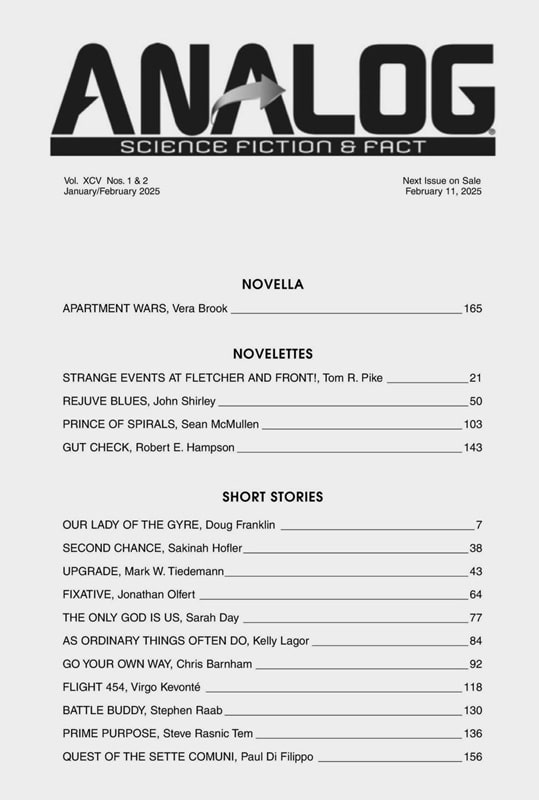
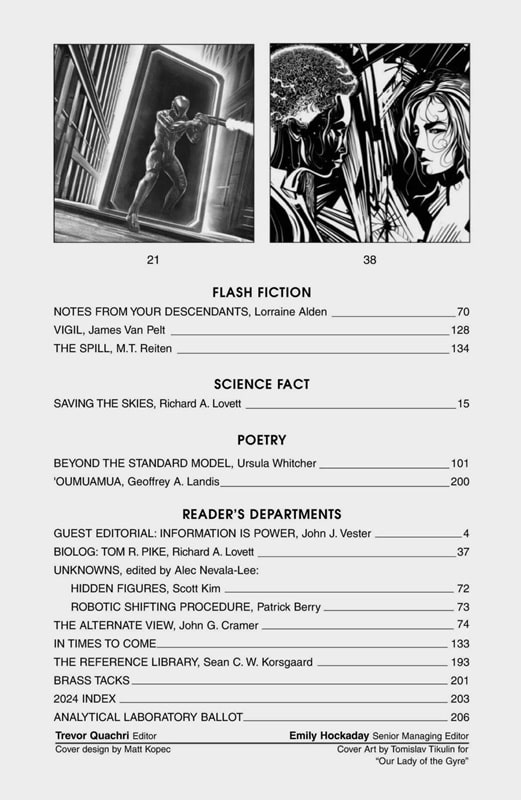
Contents of the January-February 2025 issue of Analog Science Fiction
Editor Trevor Quachri gives us a tantalizing summary of the current issue online, as usual. Sadly, I didn’t think to grab a copy before the latest issues dropped. Next time.
Here’s the full TOC.
Novella
“Apartment Wars” by Vera Brook
Novelettes
“Strange Events at Fletcher and Front!” by Tom R. Pike
“Rejuve Blues” by John Shirley
“Prince of Spirals” by Sean McMullen
“Gut Check” by Robert E. Hampson
Short Stories
“Our Lady of the Gyre” by Doug Franklin
“Second Chance” by Sakinah Hofler
“Upgrade” by Mark W. Teidemann
“Fixative” by Jonathan Olfert
“The Only God is Us” by Sarah Day
“As Ordinary Things Often Do” by Kelly Lagor
“Go Your Own Way” by Chris Barnham
“Flight 454” by Virgo Kevonté
“Battle Buddy” by Stephen Raab
“Prime Purpose” by Steve Rasnic Tem
“Quest of the Sette Comuni” by Paul Di Filippo
Flash Fiction
“Notes From Your Descendants” by Lorraine Alden
“Vigil” by James Van Pelt
“The Spill” by M.T. Reiten
Science Fact
Saving the Skies: How One Small City in Arizona is Pointing the Way to a Better (Darker) Way, by Richard A. Lovett
Poetry
Beyond the Standard Model by Ursula Whitcher
‘Oumuamua by Geoffrey A. Landis
Reader’s Departments
Guest Editorial: Information is Power by John J. Vester
Biolog: Tom R. Pike by Richard A. Lovett
Unknowns, edited by Alec Nevala-Lee:
Hidden Figures by Scott Kim
Robotic Shifting Procedure by Patrick Berry
The Alternate View by John G. Cramer
In Times to Come
The Reference Library by Sean C.W. Korsgaard
Brass Tacks
2024 Index
Upcoming Events by Anthony Lewis
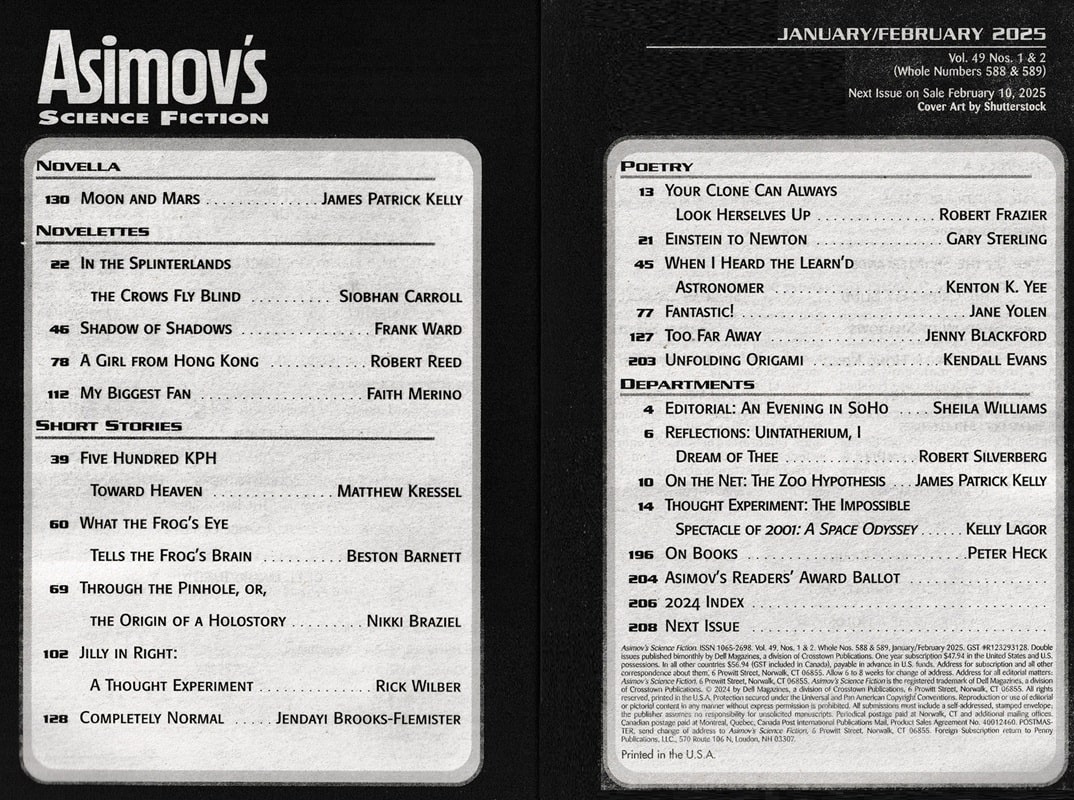 Contents of the January-February 2025 issue of Asimov’s Science Fiction
Asimov’s Science Fiction
Contents of the January-February 2025 issue of Asimov’s Science Fiction
Asimov’s Science Fiction
Sheila Williams provides a handy summary of the latest issue of Asimov’s at the website. But I missed it this month. Next time I’ll remember before it’s gone.
Here’s the complete Table of Contents.
Novella
“Moon and Mars” by James Patrick Kelly
Novelettes
“In the Splinterlands, the Crows Fly Blind” by Siobhan Carroll
“Shadow of Shadows” by Frank Ward
“A Girl from Hong Kong” by Robert Reed
“My Biggest Fan” by Faith Merino
Short Stories
“Five Hundred KPH Toward Heaven” by Matthew Kressel
“What the Frog’s Eye Tells the Frog’s Brain” by Beston Barnett
“Through the Pinhole, Or, the Origin of a Holostory” by Nikki Braziel
“Jilly in Right: A Thought Experiment” by Rick Wilber
“Completely Normal” by Jendayi Brooks-Flemister
Poetry
Your Clone Can Always Look Herselves Up by Robert Frazier
Einstein to Newton by Gary Sterling
When I Heard the Learn’d Astronomer by Kenton K. Yee
Fantastic! by Jane Yolen
Too Far Away by Jenny Blackford
Unfolding Origami by Kendall Evans
Departments
Editorial: An Evening in SoHo by Sheila Williams
Reflections: Uintatherium, I Dream of Thee by Robert Silverberg
On the Net: The Zoo Hypothesis by James Patrick Kelly
Thought Experiment: The Impossible Spectacle of 2001: A Space Odyssey by Kelly Lagor
On Books by Peter Heck
Asimov’s Readers’ Award Ballot
2024 Index
Next Issue
Analog, Asimov’s Science Fiction and The Magazine of Fantasy & Science Fiction are available wherever magazines are sold, and at various online outlets. Buy single issues and subscriptions at the links below.
Asimov’s Science Fiction (208 pages, $8.99 per issue, one year sub $47.97 in the US) — edited by Sheila Williams
Analog Science Fiction and Fact (208 pages, $8.99 per issue, one year sub $47.97 in the US) — edited by Trevor Quachri
The Magazine of Fantasy & Science Fiction (256 pages, $10.99 per issue, one year sub $65.94 in the US) — edited by Sheree Renée Thomas
The January-February issues of Asimov’s and Analog were on sale until February 11. See our coverage of the November-December issues here, and all our recent magazine coverage here.
What a Croc, Part III
 Black Water: Abyss (Altitude Film Entertainment, July 10, 2020)
Black Water: Abyss (Altitude Film Entertainment, July 10, 2020)
My next watch-a-thon is a favorite genre: crocs and gators. Unfortunately, this means the pickings are a bit slim, as I’ve already seen most of them, but I’ve managed to dig up 15 so far (supplemented with a Gila Monster and a couple of Komodos), and I’m sure the intended list of 20 will materialize as streaming services start suggesting titles.
What a Croc #14: Black Water: Abyss (2020) CrackleCroc or gator? Crocodile!
Real or faker? Some pretty great CG.
Any good? I do like me an Aussie croc flick, and this is one of them. The premise is simple: stick some folks in a cave, flood it, trap them, let loose a big croc. The spaces are tight, the tension is taut, and the croc has the good sense to eat the cast in order of character development.*
There’s a bit of relationship drama in the mix between meals, but at the end of the day it’s just a murky cocktail of Rogue and The Decent, but doesn’t come close to being as good as either. Still, I didn’t hate it, and it was well produced, so I’ll grade it a little higher.
7/10
*Now where have I seen that poster design before…?


Lake Placid: The Final Chapter (Syfy, September 29, 2012) and Rollergator (RiffTrax, 1996)
Croc or gator? Alligator(s)!
Real or faker? All terrible CG.
Any good? I still have fond memories of the first time I watched Lake Placid — I was totally unprepared for the all round brilliance of it, from the writing and the cast to the effects and direction. Sadly, each successive sequel has been horrendous, and this one, the incorrectly named ‘Final Chapter’ is the penultimate nail in the coffin.*
As you can tell from the ‘quality’ poster, the story is trite, the characters uninteresting and the effects garbage — the only redeeming features might be Robert England (hamming it up in another gator flick), and Yancy Butler (wasted here as she reprises her role as a two-pack-a-day-voiced rogue ranger). The most egregious aspect of this one though, is the directing and editing. There’s only one director who can get away with that many crash zooms, and his name is Sam Raimi.
Raimi did not direct this.
4/10
*I just discovered there are actually TWO more Lake Placid films after this one. Not that it makes this any easier.
What a Croc #16: Rollergator (1996) TubiCroc or gator? Gator. Small. Purple.
Real or faker? A hand puppet.
Any good? I tried to find the original version of this, but had to settle for the Rifftrax version. Shocking admission: I don’t find Rifftrax particularly funny (not a huge fan of MST3K either) and they just paved the way for stuff like CinemaSins and every other armchair critic who thinks they’re funny. I am fully aware of the staggering hypocrisy of this statement, but there you go.
Anyway, in this film a roller skating woman meets a small, jive talking gator and tries to get him out of the carnival and back to the swamp. Presumably written by a third-grader, it’s utter crap. Not even funny or surreal enough to be a guilty pleasure — just a miserable, miserable slog.
1/10
 Mega Shark vs. Crocosaurus (The Asylum, December 21, 2010)
What a Croc #17: Mega Shark vs. Crocosaurus (2010) YouTube
Mega Shark vs. Crocosaurus (The Asylum, December 21, 2010)
What a Croc #17: Mega Shark vs. Crocosaurus (2010) YouTube
Croc or gator? Croc. Osaurus.
Real or faker? Rubbish CG.
Any good? You know what the answer is going to be, so let’s just cut to the chase. Robert Picardo is a fine actor, he voiced the male, culturally-obsessed alien in Joe Dante’s Explorers and I love him for that. He’s also good in everything else, but I guess he needed a new deck, because he’s in this.
Gary Stretch is also in this. British boxing fans may remember the name, the rest of you will just know him as a punching bag-faced enigma with the looks of a leading man and the mystery of a Swiffer. Sarah Lieving stars opposite him as a potentially badass special investigator who is relegated to scowling boobily at the rest of the cast while flying a pretend helicopter.
The story is rote, the direction and editing are dull and the effects are tragic. The titular creatures (especially the giant croc) are rendered in spectacular blur-o-vision, unhindered by weight or physics. I feel neither joy nor despair at having watched this film, I’m just languishing in a limbo populated by cookie cutters, tight vests and pixels.
4/10


Croczilla (Beijing Enlight Pictures, 2012) and Crocodile (Lions Gate, August 26, 2000)
Croc or gator? Crocodile. Big boi.
Real or faker? Fairly decent CG (in parts).
Any good? I started watching this one quite early on in the watch-a-thon, and thought it had promise, so saved it to end on a high note. It is indeed fun, however, I would sorely love to see a subtitled version, as the English dubbing on this Chinese movie is horrendous.
Promoted as China’s ‘first monster movie’, a claim that has been made on several of the films I’ve watched from China, Croczilla is meant to be a tongue-in-cheek flick. For this reason, the actors ham it up to the level of cartoon characters, and the English V.O. artists were apparently told to do the same, because the dubbing is ear-splittingly intolerable, especially the voice of Barbie Hsu’s character, which threatened to shatter every window in the house.
Aside from the audio hell, it’s a jolly romp, with a 36 ft croc on the rampage in Hangzhou, its belly full of Yuan (about a million worth, or 100,000 Euros as the shrill dubbing informs us). The cast is likeable (although the gangsters are a trifle over the top), and the croc itself is a nice bit of CG. It’s a great model, and for the most part animated well, but some of the interactions with its environment weren’t great. Overall, I enjoyed it, and that’s what matters, so there.
7/10
What a Croc #19: Crocodile (2000) CrackleCroc or gator? Crocodile.
Real or faker? Some OK animatronics and rubbish CG.
Any good? Apparently, when I said Eaten Alive was the only Tobe Hooper film I hadn’t seen, I had forgotten about this one — and I wish it had remained forgotten. I was initially excited when I saw Hooper’s name, doubly so when I saw the effects were done by Nicotero and Berger, but it seems there was no budget for effects and Hooper couldn’t give two shits about the film.
Nobody brings anything fresh to the production, it’s the same tired old story of unlikeable frat kids getting drunk and horny in a swamp, and the only reason to watch is to see how they get dispatched. Unfortunately, save for a couple of fun shots of folks sliding down a gullet, it’s all a bit ham-fisted, and the CG croc suffers from the same weightlessness as all the other low-budget beasts of the era. A shame.
5/10
 Crocodile 2: Death Swamp (Nu Image Films, August 1, 2002)
What a Croc #20: Crocodile 2: Death Swamp (2002) Crackle
Crocodile 2: Death Swamp (Nu Image Films, August 1, 2002)
What a Croc #20: Crocodile 2: Death Swamp (2002) Crackle
Croc or gator? Crocodile. Again.
Real or faker? Some pretty great animatronics.
Any good? Hot on the heels of the disappointment of Crocodile comes Crocodile 2, which chose to ignore sequel conventions and be titled Crocodiles. Also surprisingly, it is that rare breed, the superior sequel, and I had a lot of fun with it.
No hackneyed ‘hot kids in a swamp’ plot, this one is full of bank robberies, plane crashes and helicopter hijinks. The bad guys are extremely potty-mouthed and awful enough to cheer when they get eaten, and the plucky protagonists put up a fair fight. The effects are actually pretty gruesome, and the croc itself is one of the better ones I’ve seen. Good heavens, I do believe I’ve ended on a high note!
8/10
That’s the crocs and gators done. Next up, werewolves!
Previous Murkey Movie surveys from Neil Baker include:
What a Croc, Part I
What a Croc, Part II
Prehistrionics
Jumping the Shark
Alien Overlords
Biggus Footus
I Like Big Bugs and I Cannot Lie
The Weird, Weird West
Warrior Women Watch-a-thon
Neil Baker’s last article for us was What a Croc, Part II. Neil spends his days watching dodgy movies, most of them terrible, in the hope that you might be inspired to watch them too. He is often asked why he doesn’t watch ‘proper’ films, and he honestly doesn’t have a good answer. He is an author, illustrator, outdoor educator and owner of April Moon Books (AprilMoonBooks.com).
Love of Family & Land in “A Fort of Nine Towers” by Qais Akbar Omar
A Fort of Nine Towers is one of the rare memoirs of Afghanistan to have…
The post Love of Family & Land in “A Fort of Nine Towers” by Qais Akbar Omar appeared first on LitStack.
THE FROZEN PEOPLE by Elly Griffiths
Book Review: Emily Wilde’s Compendium of Lost Tales by Heather Fawcett
I received a review copy from the publisher. This does not affect the contents of my review and all opinions are my own.
 Emily Wilde’s Compendium of Lost Tales by Heather Fawcett
Emily Wilde’s Compendium of Lost Tales by Heather Fawcett
Mogsy’s Rating: 4 of 5 stars
Genre: Fantasy
Series: Book 3 of Emily Wilde
Publisher: Del Rey (February 11, 2025)
Length: 368 pages
Author Information: Website
Having followed Emily and Wendell’s journey through the first two books of this series, I was excited to see how the trilogy will end, especially now with the weight of a faerie realm hanging in the balance. I’m happy to say Emily Wilde’s Compendium of Lost Tales delivers a satisfying and enchanting conclusion that offers the perfect balance between adventure, scholarly curiosity, and whimsical charms—all the things that made me fall in love with this series in the first place.
Before we proceed, a mild spoiler warning for the previous books if you haven’t caught up yet. The story finds Emily Wilde and her fiancé, Wendell Bambleby, coming to terms with their new roles as rulers of Wendell’s ancestral kingdom in Faerie. As someone who has dedicated her life to dryadology, or the study of faeries, Emily has always preferred learning about her beloved subject from the safety of university classrooms and libraries. This new development, however, will thrust her out of her comfort zone and into the dangerous politics and intrigues of the fae world. And things are not exactly stable right now in Wendell’s realm!
Before vanishing, Wendell’s spiteful and ruthless stepmother Queen Arna had placed a curse on the land, leaving it clinging onto life. To lift the curse and return the realm to normal, Emily leaps into her role as the new queen not only to support Wendell, but also to stay true to her academic roots, resolving to find an answer in her rich knowledge of faerie stories. In this world, she may feel like a fish out of water, but when it comes to fae lore, there is no greater expert. If there’s even a grain of truth in these legends, or a clue that may help, our protagonist is determined to find it.
For a sequel that picks up right after the previous book left off, Emily Wilde’s Compendium of Lost Tales gets off to a relatively slow start. For the first half of the book, it feels as if barely anything happens. Sure, Wendell has to face up to his new responsibilities as king, going through the motions of posturing and winning a few duels here and there. But for the most part, we don’t move past much past the central conflict that his realm is under threat. Emily also plays her role as an outsider, perhaps a bit too well. This section sees her without much agency, being tossed around the court, doing wherever her new duties as acting queen requires of her. She’s meek, she’s unsure, and she spends a lot of this time either going with the flow or simply staying out of the way.
That said, there is a silver lining. We’ve spent most of the last two books in Emily’s sphere of influence, but we’re in Wendell’s now. And what we learn is that sweet, easygoing Wendell can in fact be very scary if the need calls for it. The interactions become so much more interesting in this new dynamic, for while the relationship and banter between our two main characters remain light and airy, we can tell Emily is still getting used to seeing Wendell in his new role. Of course, she is still important to him, and the romance between them is alive and well. But with his kingdom and his people in peril, there are other things to occupy his attention. It’s a significant adjustment— not just for our protagonist, but for me as a reader as well.
Perhaps not coincidentally, the story picks up at around the same time Emily regains some of her confidence reflected in the passion for her work. That’s when both the novel’s pacing and the world’s imagination come alive again. Emily’s no-nonsense intellect takes over, making some headway into finding a solution, all the while giving readers a chance to indulge in delightful fae lore. As she delves deeper, the book’s vibe shifts to weaving in intrigue and danger, with the tensions building to a satisfying conclusion.
In the end, Heather Fawcett gives us fans the gift of a strong final installment in Emily Wilde’s Compendium of Lost Tales. This ending might have been heartfelt and bittersweet in its poignancy yet still felt just right—a fitting farewell to our unforgettable couple, Emily and Wendell.
![]()
![]()
More on The BiblioSanctum:
Review of Emily Wilde’s Encyclopaedia of Faeries (Book 1)
Review of Emily Wilde’s Map of the Otherlands (Book 2)
The Fiction of Edgar Rice Burroughs, Part III: The Westerns and The Mucker
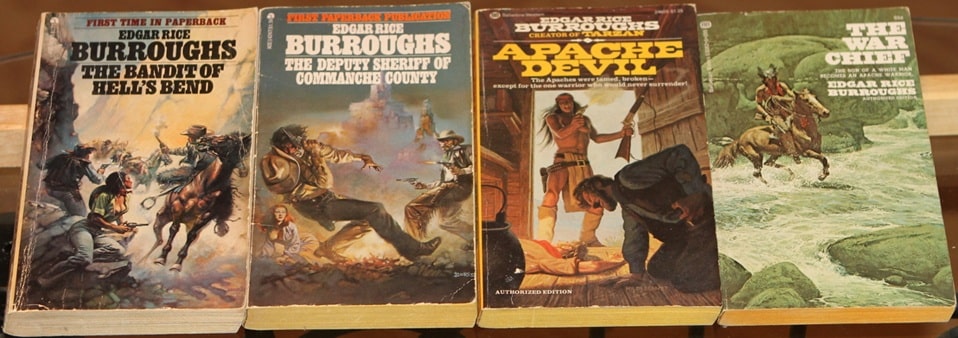 Westerns by Edgar Rice Burroughs: The Bandit of Hell’s Bend and The Deputy Sheriff of Commanche County (Ace Books); Apache Devil and The War Chief (Ballantine Books). Covers by Boris Vallejo, the Brothers Hildebrandt, and Frank McCarthy.
Westerns by Edgar Rice Burroughs: The Bandit of Hell’s Bend and The Deputy Sheriff of Commanche County (Ace Books); Apache Devil and The War Chief (Ballantine Books). Covers by Boris Vallejo, the Brothers Hildebrandt, and Frank McCarthy.
Like many pulp writers of his day, ERB dipped his toes into the western genre. He wrote four: two pretty standard ones and two that incorporate the Native American experience. He knew something of what he wrote, having worked on his brother’s ranch in Idaho at age 16, and having served with the 7th cavalry in Arizona in the late 1890s.
His first standard western was The Bandit of Hell’s Bend (1924), followed by The Deputy Sheriff of Commanche County in 1940. Both of my copies are later printings from Ace with very cool Boris illustrations. I like these better than many of Boris’s paintings because they seem less static. He does a good job of portraying action here.
In Bandit, we have a disgraced ranch foreman and a young woman who has inherited the ranch, and various villains who want to steal the ranch from her because they know there’s silver on it. The foreman, Bull, has to rise to the occasion. There’s great action and pretty good plotting, although you’ll probably figure it out pretty soon. And, as always, ERB creates sympathetic heroes and dastardly villains.
In Deputy Sheriff, a cowboy named Buck Mason is suspected of a murder he didn’t commit, and he has to run and hide until he has a chance to prove his innocence. This plot is not as good as Bandit but it gets the job done to showcase ERB’s lightning paced tale.
ERB’s other two westerns are connected and center very strongly on the Native American experience. The hero, though, is a white boy who is taken captive by Apaches and raised as Geronimo’s adopted son. He is given the Apache name of Shoz-Dijiji (Black Bear), for having killed one at a young age, and he grows up hating whites.
These books are The War Chief (1927), and Apache Devil (1933). Although there are some stereotypical elements to these books, they show that ERB had very strong sympathies for the Apache and disapproved of the way they had been treated by whites.
I found all of these books well worth reading, though the Apache books have stayed with me the longest. The cover art for The War Chief is magnificent and is by Frank McCarthy. The Apache Devil cover looks to be signed by Hildebrandt.
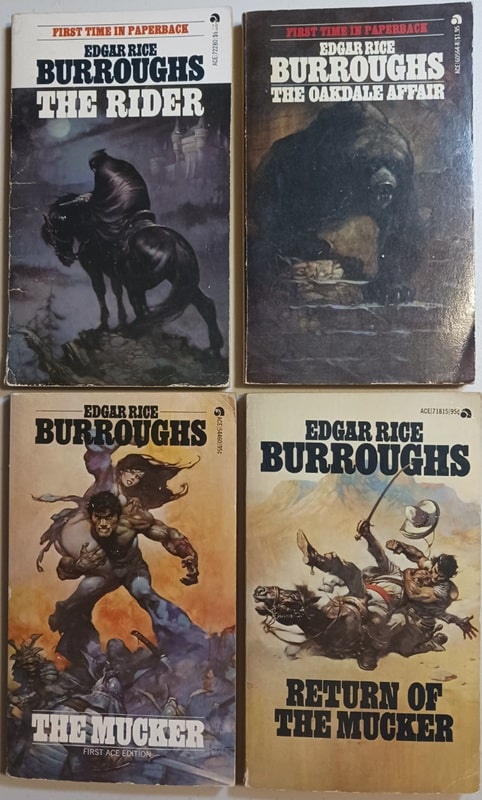 The Rider, The Oakdale Affair, The Mucker, and Return of the Mucker (Ace Books). Covers by Frank Frazetta.
The Rider, The Oakdale Affair, The Mucker, and Return of the Mucker (Ace Books). Covers by Frank Frazetta.
ERB wrote a three book series generally called The Mucker. They were first published in magazines in the mid to late 1910s, but I have much later reprints, of course, from the 1970s. All of mine, shown here, are from Ace books with Frazetta covers. I particularly like the first book cover, although all are cool.
The Mucker (1914). Billy Byrne is born on the mean streets of Chicago and grows up a criminal. After being accused of murder, he flees to San Francisco and ends up shanghaied. A shipwreck leaves him and a beautiful high society girl stranded in an east Asian jungle and she needs rescuing. I really liked the development of the character here. Through love, Billy learns how to be a decent human being and becomes quite a hero.
The Return of the Mucker (1916). This book finds Billy trying to clear himself of his previous murder charges and failing. He ends up in Mexico in the midst of a revolution. And it so happens that his love interest from the first book, Barbara, is also there. The Mucker was a very fine novel but the sequel is pretty weak. Coincidences pile upon coincidences until it’s pretty hard to suspend belief. But it still has the action rolling. This one could easily be counted as one of his westerns given the setting.
The Oakdale Affair (1918). I’m not sure what ERB was striving for with this book. It’s got mystery elements, gothic elements, horror elements, western type elements. He put everything and the kitchen sink into this one. But it worked and I enjoyed it. It is only peripherally related to the Mucker stories in that it features a hobo character that appeared in The Return of the Mucker.
I included ERB’s The Rider here because of the Frazetta cover and because it was at one point published in a double with The Oakdale Affair. But it’s not part of the Mucker series. It involves a bandit called “The Rider” who exchanges places with a prince (Boris) who is about to be married to the princess of another European duchy (neither of whom want to marry the other). Chaos ensues. ERB crammed a lot of action and plot twists into this short work.
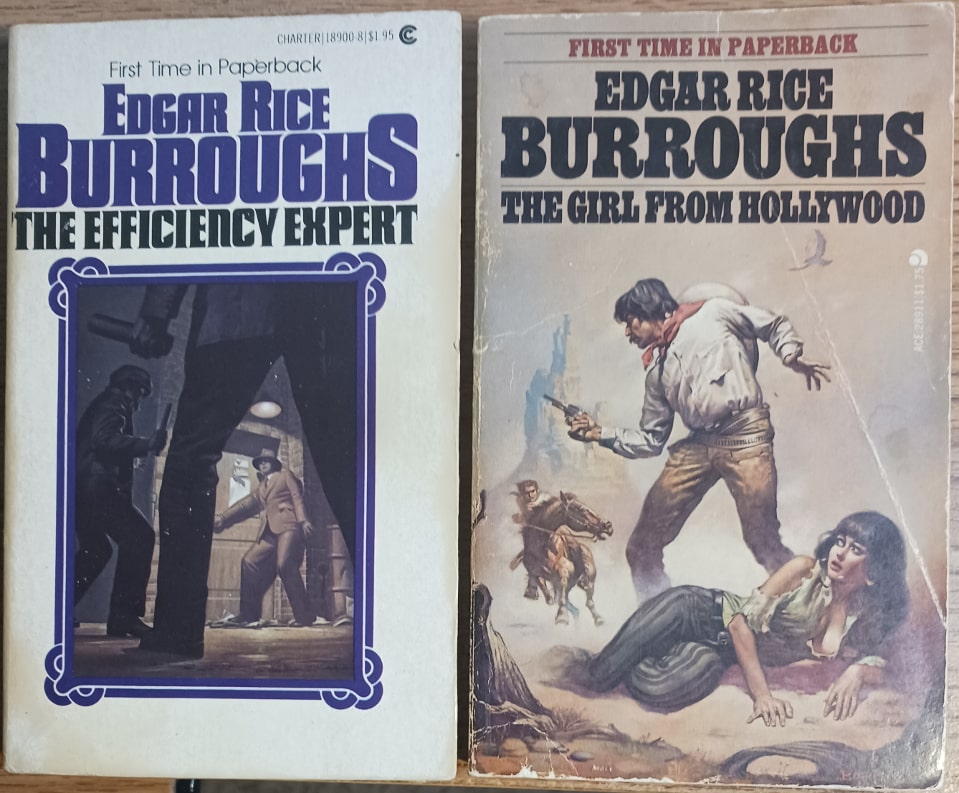 The Efficiency Expert (Charter, 1979) and The Girl From Hollywood (Ace Books, 1977). Covers by John Rush and Boris Vallejo
The Efficiency Expert (Charter, 1979) and The Girl From Hollywood (Ace Books, 1977). Covers by John Rush and Boris Vallejo
My favorite genres are Fantasy, SF, Westerns, Horror, and Thrillers. I don’t read a lot of straight mysteries and read relatively little “mundane” fiction. By mundane, I mean fiction set in a modern world where the happenings are portrayed as realistic. After reading ERB’s westerns and everything he wrote with fantastic elements, I was left with three books: The Girl from Hollywood, The Efficiency Expert, and The Girl From Farris’s.
They were also among the more difficult ERB books to find and were expensive, but I wanted them because they were… well, ERB. I got both Girl and Efficiency in 1970’s paperback form but couldn’t get Farris and finally ordered it in a modern paperback printed from public domain materials. Here are my capsule reviews.
The Girl from Hollywood (ACE, 1977, Boris Cover) is not quite a western. It takes place in the 1920s, but much is set in a western landscape and involves many western tropes. The plot involves a fine western family whose lives become entangled with Hollywood types. Some of these are basically good and recover from their evil natures while others never do.
As is typical of ERB’s work, there are coincidences that help the plot along, and there’s actually very little action compared to his typical story. However, the sheer narrative drive that ERB was able to bring to his tales keeps you reading. I finished it in one day, if not quite one sitting. Not my favorite work by him by far, but still enjoyable.
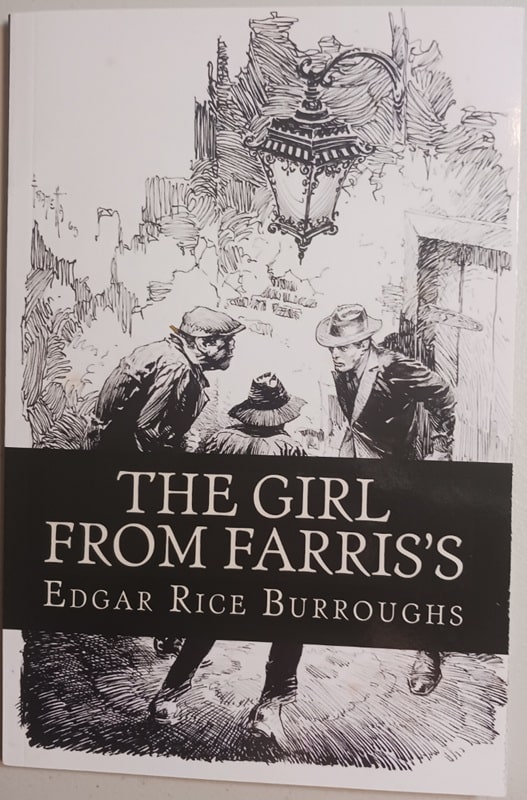 The Girl from Farris’s (CreateSpace edition, 2017). Cover by Frank Frazetta
The Girl from Farris’s (CreateSpace edition, 2017). Cover by Frank Frazetta
The Girl from Farris’s (Public Domain, from CreateSpace, 2017). The cover is by Frank Frazetta. An editorial note names Taylor Anderson as editor, and claims the publisher is Odin’s Library Classics. The text appears to be intact but the print is small and there are no indented paragraphs. I actually read this in ebook version, though, so I’ll just stick it on my shelves. I rather like the cover but don’t know where it came from.
“Farris’s” is a house of ill repute and June Lathrop a lady of the evening who is trying to escape it. She meets a young man — Ogden Secor — who wants to help her and fate keeps throwing them together. It’s a tale of redemption, which is an element in all three of these novels. One particularly interesting point is that Ogden is a failed Chicago businessman who tries to make a new life for himself in Idaho. ERB himself fled the business world of Chicago for his brother’s Idaho ranch. They say, “write what you know.”
The Efficiency Expert (Charter, 1979, cover by John Rush) is the last Burroughs book I’ve read, and very nearly the last one to exist that I hadn’t read. I left these three to last thinking they weren’t much up my alley. None of them have any fantastic elements. Efficiency Expert is a straightforward and realistically based story of a young man of quality who is down on his luck but never succumbs to corruption and wins out in the end. I was engrossed throughout. There’s certainly plenty of coincidence featured in the plot but I didn’t mind it much and even without a lot of action happening, it had narrative drive and kept my attention.
I’d rate Efficiency the best of the three, followed by Hollywood and Farris’s.
We’ll wrap up Burroughs next time with a look at his Hollow Earth tales.
Previous installments in this series include:
The Fiction of Edgar Rice Burroughs, Part I: Sword and Planet
The Fiction of Edgar Rice Burroughs, Part II: Tarzan and The Land That Time Forgot
Charles Gramlich administers The Swords & Planet League group on Facebook, where this post first appeared. His last article for Black Gate was The Fiction of Edgar Rice Burroughs, Part II: Tarzan and The Land That Time Forgot.
Taken by an Immortal Elf - Book Review by Voodoo Bride
 Taken by an Immortal Elf(Elves Among Us: Forbidden Love #0.5)by L.E. Sunwick
Taken by an Immortal Elf(Elves Among Us: Forbidden Love #0.5)by L.E. SunwickWhat is it about:My captor sees me as one of those destroying his sacred forest. I see him as the most gorgeous male on earth.So handsome. Those muscles. That athletic self-confidence. He is an immortal elf more than a century older than I. He calls me a lioness because I stand up to my wealthy uncaring parents - and him. Ours is a forbidden attraction. He is an elf of legend. I am a mortal duchess and a human he does not trust. We cannot be together.But I would sacrifice my happiness to save his sacred lands from my parents’ greed. My brief time with him was a lifetime’s worth. If I don’t do something, lives - and our budding love - may be lost. Even the courage and prowess of a hundred real lionesses may not be enough. But for a tiny chance at true love, I am willing to find out.
What did Voodoo Bride think of it:I recently participated in one of those 'Stuff your Kindle' events, and got signed up for tons of newsletters because of it. One of them was the newsletter of L.E. Sunwick. When there was a call for ARC/early readers for a rewritten book 1 in this series I got curious, signed up, and dug through my Kindle app what story of L.E. Sunwick I downloaded. It turned out to be this prequel story, so I decided to immediately give it a try.
And this turned out to be such an enjoyable read, that has several things I can't resist in my romances.
Hunky immortal elf: check!Heroine I liked from the start: check!Forbidden Love: double check!
This is a short story (82 pages), but it feels complete, and has romance, action, steam, and sacrifice. I finished this in no time at all, and you can be sure I'm already looking forward to reading more in this series. Each book can be read as a standalone as well I've been told, so I might check out book 2 soon.
Why should you read it:It's a very enjoyable Fantasy Romance read
Goth Chick News: (Another) Throwback Thursday – Johnny Depp, Roman Polanski, and The Club Dumas
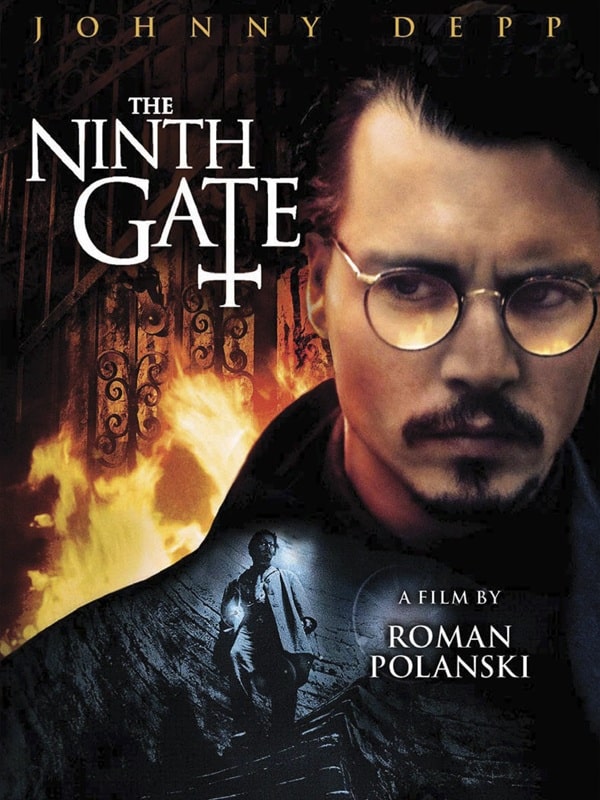 The Ninth Gate (Summit Entertainment, 1999)
The Ninth Gate (Summit Entertainment, 1999)
Last week’s article on Angel Heart not only resulted in a lot of fun and insightful comments from all of you, but it got me thinking about another film that I appreciate in a similar way. It will be twenty-six years old next month and having given it a re-watch last weekend, I wondered what your thoughts would be on this one.
The Ninth Gate, directed by Roman Polanski and starring Johnny Depp, was released in March 1999. Polanski was co-writer on the screenplay which was loosely (and I do mean loosely) adapted from the book, The Club Dumas (1993) by Arturo Pérez-Reverte.
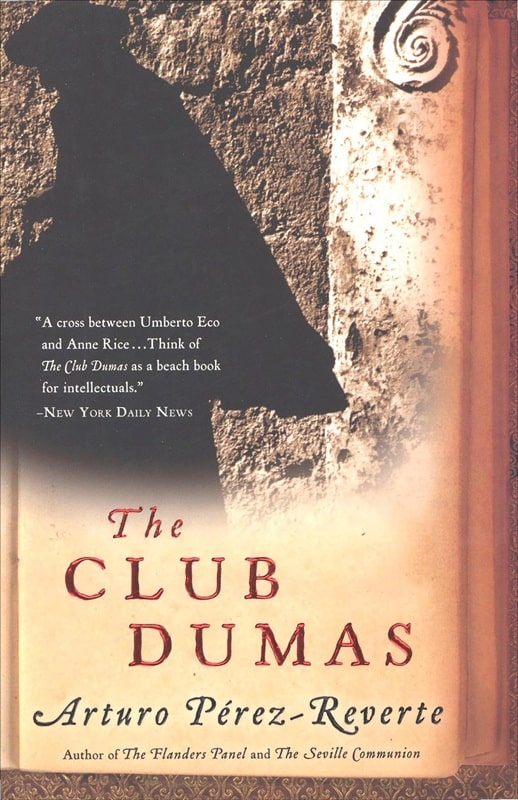 The Club Dumas by Arturo Pérez-Reverte (HarperVia, May 1, 2006)
The Club Dumas by Arturo Pérez-Reverte (HarperVia, May 1, 2006)
In the film, Dean Corso (Depp) is a New York book dealer with a reputation for unscrupulous methods. When Boris Balkan (Frank Langella), a wealthy collector of rare books on the occult, hires him to authenticate a mysterious tome called The Nine Gates of the Kingdom of Shadows, Corso embarks on a journey across Europe.
The book, rumored to summon the devil when used correctly, exists in three copies, but only one is authentic. Corso’s task is to examine the three editions and uncover the truth. As Corso delves deeper into his investigation, strange deaths and supernatural occurrences begin to haunt his steps. Along the way, he is joined by a mysterious woman (Emmanuelle Seigner), whose true nature seems tied to the book’s sinister secrets.
In parallel with Angel Heart, The Ninth Gate presents a dark journey into the unknown by a skeptical protagonist who is in over his head but doesn’t know it. The memorable visuals created by Darius Khondji, who is known for his work on Se7en, are well synchronized with the puzzle elements of the story and Polanski’s signature direction is evident as well. From dusty bookstores to candlelit castles, the cinematography oozes occult suspense all over the place.
I frankly love The Ninth Gate all the way up until its final few moments.
[Minor spoilers ahead.]
The film does a fabulous slow burn to what can only be described as an enigmatic conclusion, and this is why Angel Heart is still my favorite of the two films. While we aren’t at all confused as to what will become of Harry Angel, The Ninth Gate leaves viewers in the maddening position of wondering whether Dean Corso has unlocked forbidden knowledge, become ensnared in a deadly conspiracy, or gone to literal Hell – maybe all three. I remember screaming “NO!” at the screen when the credits rolled since all the fabulous creepiness that built through the entire film, simply went off a cliff at the very end, without resolution.
 Johnny Depp in The Ninth Gate
Johnny Depp in The Ninth Gate
That sent me straight to the source material to see if Polanski was being a jerk by leaving us with such an unsatisfactory conclusion. I immediately went out and bought a copy of The Club Dumas assuming that it would fill in some, if not all, of the missing pieces.
Nope.
While The Ninth Gate is based on The Club Dumas, it omits substantial portions of the novel, particularly a subplot about a lost chapter of The Three Musketeers. The film focuses solely on the occult storyline, which, by the way, is a sub, SUB plot of the book. If anything, the ending of the book was even more obtuse, with themes centered on literary puzzles and human obsession rather than a definitive supernatural climax.
Interestingly, the titular tome at the center of the film, called De Umbrarum Regni Novem Portis, or The Nine Gates of the Kingdom of Shadows, is a fictional text. Its design plays a significant role in the plot, with eerie and violent illustrations which are gruesomely brought to life in the form of the demise of several characters. The engravings within The Nine Gates book, which were painstakingly designed for the film, serve as the visual centerpiece of the story. Each engraving contains subtle differences across the editions, forming cryptic clues for Corso and the audience to unravel. For movie prop collectors, it is a highly recognizable and sought-after addition.
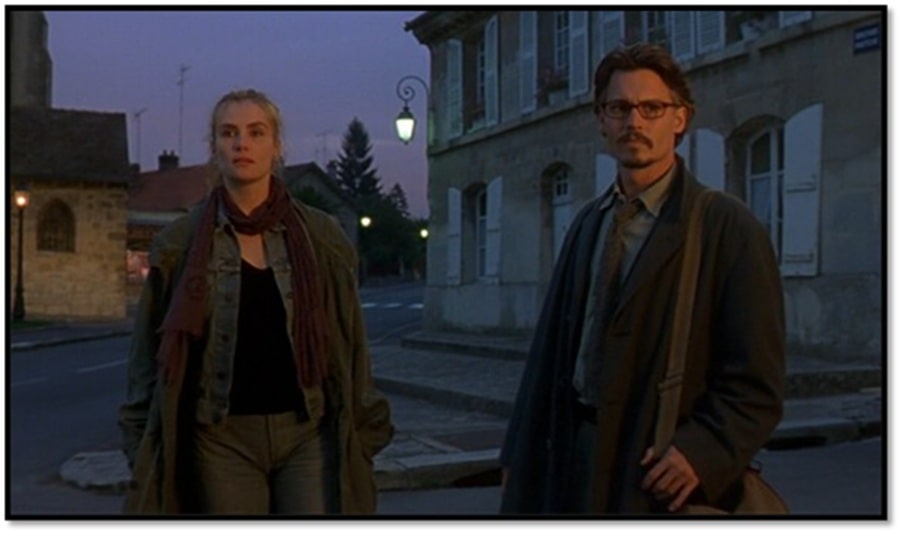 Emmanuelle Seigner and Johnny Depp in The Ninth Gate
Emmanuelle Seigner and Johnny Depp in The Ninth Gate
I used to have visions of owning my own copy of The Nine Gates, however, a well-made replica with a leather cover can go for upwards of $1200 or more. If you’re interested in a more attainable version, an engineer named Michael F. Haspil has created a detailed tutorial including the printable text and illustrations you’ll need to build one yourself, which you can find here.
Ultimately, The Ninth Gate received mixed reviews at the box office and made a rather crappy $58M against a $38M budget – so basically a bomb by Hollywood standards. Though critics praised its style, it was criticized for its pacing and lack of resolution. Despite that, The Ninth Gate has aged well with viewers like me who enjoy slow-burning mysteries and subtle horror. Depp delivers a restrained performance, grounding the fantastical story in a world of skepticism and pragmatism, while Frank Langella’s portrayal of Boris Balkan adds recognizable vice as a man consumed by his quest for power, at the peril of his soul.
The Ninth Gate’s blend of literary intrigue and supernatural tension makes it a film that (mostly) stands up over time. Whether you’re a fan of Polanski’s work, a lover of occult mysteries, or simply curious about the interplay between literature and cinema, The Ninth Gate is worth revisiting.
Thoughts?
Spotlight on “The Antidote” by Karen Russell
The Antidote is a gripping dust bowl epic about five characters whose fates become entangled…
The post Spotlight on “The Antidote” by Karen Russell appeared first on LitStack.
On McPig's Radar - A Web of Obsidian
 A Web of Obsidian(The Obsidian Sisterhood #1)by Lydia M. Hawke
A Web of Obsidian(The Obsidian Sisterhood #1)by Lydia M. HawkeAt 69 years old and with two martial arts black belts to her name, Sister Monica Barrett has never been one to back down from a fight. But the one that just landed on the ragged front lawn of the women’s shelter she runs may be more than she’s equipped to handle.
At first glance, the assailant in pursuit of a young woman seems like an all-too-familiar story. But this attacker has powers—he moves with uncanny speed, strikes with brutal accuracy, and isn’t after the woman at all. Instead, he wants what she has: a flat, black stone with a spider’s web embedded in it.
The instant Monica touches the stone, her world is turned upside down. Power surges through her and destroys her adversary—the kind of supernatural power that should belong only to the God she serves. A horrified Monica is determined to rid herself of the stone and whatever it holds, but with more attackers coming after her and the women she shelters, she needs to move fast.
Can Monica find where the stone came from before it falls into the wrong hands? Will it be safe to return it to its rightful place? Or has a nun of a certain age just inadvertently become the keeper of a dark power no human should wield?
Expected publication February 25, 2025
Track Her Down by Melinda Leigh
Mystery
When Claire returns home from work she discovers her parents, lying in bed, murdered. While investigating the murder Bree Taggert uncovers family secrets and a shocking motive.
Every now and then an author stumbles upon the magic sauce that makes a series great. Robyn Carr found it with Virgin River, Patricia Briggs with Mercy Thompson and Kendra Elliot nailed it with Mercy Kilpatrick. Bree Taggert is kind of like that. Melinda Leigh’s other series’ were good, even great, but Bree Taggert got everything right.
And when you hit that sweet spot there is a lot of pressure to keep going. Robyn Carr kept going with Virgin River way past its best before date. I wonder if Patricia Briggs is also approaching that point with Mercy Thompson. And in some ways this book feels like that. It’s good. Every bit as good as some of her other books, but it also feels like maybe the series has run its course and maybe it’s time to explore new ideas.
Overall, this book was good but not great. But there were opportunities in this book which were not explored and I hope Melinda Leigh planted those seeds to be explored in her next project.

Review: The Devils by Joe Abercrombie

Buy The Devils
OFFICIAL AUTHOR BIO: Joe Abercrombie was born in Lancaster, England, studied psychology at Manchester University, and worked as an editor of documentaries and live music before his first book, The Blade Itself, was published in 2006. Two further installments of the First Law trilogy, Before They Are Hanged and Last Argument of Kings, followed, along with three standalone books set in the same world: Best Served Cold, The Heroes, and Red Country. He has also written the Shattered Sea trilogy for young adults, the Age of Madness trilogy for old adults, and Sharp Ends, a collection of short stories. He lives in Bath, England, with his wife and three children. The Devils is his thirteenth novel.FORMAT/INFO: The Devils will be released by Tor Books on May 6th, 2025. It is 560 pages. It will be released in hardcover, ebook, and audiobook formats.
OVERVIEW/ANALYSIS: When Brother Diaz is summoned to the Sacred City, he's sure he is finally landing a prestigious position that will reflect his hard work and dedication. But instead of a noble, glorious assignment, he finds himself in charge of the Chapel of Holy Expediency, an arm of the wing the Church doesn't even officially acknowledge. Brother Diaz is now responsible for dangerous individuals, ranging from a blood-thirsty werewolf to an arrogant necromancer. Their current assignment: escort a lost princess across the continent and install her as the rightful empress of a neighboring empire. In their way: four dangerous cousins who want the princess eliminated so they can take the throne instead.
The Devils is another fantastic fantasy novel featuring that signature blend of Abercrombie: violence, crassness, and a host of memorable characters. Unsurprisingly, my favorite part of the story was the characters themselves. There are several POVs in this book, and every chapter felt like it had a distinctive voice. You could tell when it was a princess chapter versus a werewolf chapter versus a necromancer chapter. All these POV chapters provide insights into the characters themselves, which allows the readers to grapple with a real question: How dangerous are the members of the Chapel of Holy Expediency? Are they being unnecessarily prosecuted? Or has the Church accurately determined that these people are a clear and present danger to society if left unchecked? There is not a cookie cutter answer that applies to all of these characters, and it was intriguing to unpick their backstories and make my own judgement about them.
Speaking of the Church, let’s discuss the setting itself. The Devls is set in an alternate medieval Europe; while you’ll find references to familiar locations like England and Barcelona, you’ll also find the populace lives in fear of another invasion of cannibalistic elves. The Church is Christianity-adjacent, in that it worships one God, but they use different iconography, and their Savior is a woman, resulting in much of the upper Church leadership being women. All of this is in service of a VERY thinly veiled satirical critique of organized religion. It is a constant theme throughout the book, to the point of being slightly overdone.
The story itself was a blast to read. Our characters must journey from essentially the Vatican to Troy to return the lost princess to her throne. In their way are four royal cousins who want the throne for themselves, resulting in multiple attacks, traps, and attempts on the princess’s life. While individually, each fight is well done and distinctive, it did start to feel slightly repetitive by the end of this 500+ page book.
CONCLUSION: That doesn’t stop The Devils from having one heck of a gut punch as the story concludes. While the mission of this particular book, returning the princess to her throne, is wrapped up by the end, there are multiple tantalizing hooks dangling that foreshadow things to come. I myself cannot wait to see these characters come back and grapple with a new problem, and see how events from book one have (or haven’t changed) their outlooks. In short, The Devils is a fantastic opening for a trilogy that is sure to be thrilling and engaging journey.
Cover Reveal: Special Delivery by Rex Burke

OFFICIAL BOOK BLURB: A dangerous mission. A second chance.
Actually, scratch that. No chance.Dix’s career as a trooper in the Federation army is unblemished – until the day he disobeys a direct order and strikes an officer.
Now Dix has a choice. Face a life of hard labour that promises to be brutal and short. Or accept a mysterious invitation to join a black-ops mission in hostile terrain.
The plan sounds simple, if horribly dangerous. Fetch a fearsome weapon from a secret location and deliver it to a distant planet, whose population is under the chilling yoke of the Federation’s rival empire, the Axis. Do it without getting caught, or implicating the Federation, and Dix’s transgressions will be forgiven.
But the weapon turns out to be unlike anything he could have expected, and Dix’s troubles have only just begun.
'SAS Rogue Heroes' x 'Starship Troopers' – Special Delivery introduces a ragtag crew of misfits and malcontents on a mission with more holes than a blaster-riddled corpse. It’s a fluid, easy-reading, military-action Sci-Fi adventure, perfect for fans of Tanya Huff and John Scalzi.
Intriguing? Let's look at the cover, designed by: Chris Hudson

PREORDER your copy of Special Delivery here
OFFICIAL AUTHOR INFORMATION: Rex Burke is a SciFi writer based in North Yorkshire, UK.
When he was young, he read every one of those yellow-jacketed Victor Gollancz hardbacks in his local library. He’s sure there are still thrilling SciFi adventures to be told – even if he has to write them himself.
When he’s not writing, he travels – one way or another, he’ll get to the stars, even if it’s just as stardust when his own story is done.
Website: https://rexburke.com/
Contact: rex@rexburke.com
BlueSky: @rexburke.bsky.social
Let's hear from the author about how he came up with the idea from the book:
"Ideas for books come to me in all sorts of ways – the first germ of what became Orphan Planet was a disastrous camping trip one of my sons went on; The Wrong Stop came out of a lifetime spent travelling around Europe on trains, and wondering about the people I met on board.And sometimes a single thought is enough, and on one such train, early last year, two fully formed sentences popped into my head, unbidden. Here they are:
†'Their unit, OneSquad, had been fighting hard all day across difficult terrain. The planet was a squelching, crater-filled shithole, and Dix was covered in mud – at least, he hoped it was mud – but orders were orders.'
Those two sentences begin the book that is Special Delivery, which will be published in April.
I never set out to write a hard-edged Sci-Fi story about space troopers on a secret mission, but that's what my next book is – though you should be reassured that it's also full of banter, laughs, scrapes and mysteries. A traditional Rex Burke book, in fact, but this time set entirely in space, and with added fights, guns, blood, intrigue and betrayal."
7 Author Shoutouts | Authors We Love To Recommend
Here are 7 Author Shoutouts for this week. Find your favorite author or discover an…
The post 7 Author Shoutouts | Authors We Love To Recommend appeared first on LitStack.
Reading for the End of the World Redux
Eight years ago, in the wake of the 2016 election, I penned a piece for Black Gate that I called “Reading for the End of the World”, in which I listed a dozen books I thought ideal for helping us get through the four years of turmoil and uncertainty that loomed ahead. I wrote it, posted it, and moved on with my life, little suspecting that coping with that particular cultural earthquake was not a one-time job like getting a vasectomy, but would instead turn out to be an onerous recurring chore like mowing the lawn or doing the laundry.
Well, if He did it again, I suppose I should too. Therefore, once again, “In the spirit of the incipient panic, withered expectations, and rampant paranoia that seem to dominate our current national life, I offer twelve books to get you through the next four years (however long they may actually last): a reading list for the New Normal.” (Groundhog Day is a movie, not a book; that’s why it’s not here.) In 2017 I hoped that the books I discussed would provide some much-needed insight or diversion, and that’s my hope for these twelve additional volumes. Some things have changed after the passage of eight years, however, so now I suppose I should also state that these books were neither written nor selected with the help of A.I. (Of course, that just begs the larger question — how do you know that “Thomas Parker” is a real person? Short answer: you don’t. Then again, I don’t know if any of you are real people, either.)
1. All the King’s Men by Robert Penn Warren, 1946
Generally considered the greatest American political novel (though Robert Penn Warren denied that he had any explicit political intent in writing it), All the King’s Men follows the rise and fall of Willie Stark, who begins as an idealistic backcountry lawyer and ends as the extraordinarily powerful and ruthless governor of his state. That state is Louisiana, and Willie Stark bears more than a coincidental resemblance to the real-life governor of Louisiana from 1928 to 1932, Huey Long, who maintained an iron grip on the state even after he left the Baton Rouge statehouse to become a United States Senator and presidential aspirant. Long’s career ended with his assassination in 1935, just as Willie Stark’s life is also cut short by an assassin’s bullet. However, the book is more than just a political roman à clef, more than an incisive portrait of an unscrupulous demagogue or a warning about the dangers such a person can pose for a democracy; fundamentally, it’s meditation on the mysterious conjunctions of character and history, and an examination of the myriad ways personal (and often petty) passions mesh in unforeseen and unpredictable ways, powering the huge, seemingly impersonal processes we all find ourselves caught up in. All the King’s Men (which has been filmed twice, first in 1949, winning Broderick Crawford a Best Actor Oscar for his Category 5 portrayal of Willie Stark, and less successfully in 2006, this time with Sean Penn in the lead role) is a book which will always have something to say to those who want to gain some measure of understanding (if not tranquility) by taking a step back and viewing the storm from a distance.
2. Stayin’ Alive: The 1970’s and the Last Days of the Working Class by Jefferson Cowie, 2010
Stayin’ Alive (the irony of the title becomes increasingly apparent through the course of the book) sheds a bright light on our current condition by chronicling how “The social and political spaces for the collective concerns of working people — the majority of the citizenry — disappeared from American civic life when the nation moved from manufacturing to finance, from troubled hope to jaded ennui, from the compromises and constraints of industrial pluralism to the jungle of the marketplace.” The progression of the key players — labor leaders like Jimmy Hoffa and George Meany and politicians like Hubert Humphrey, Robert and Edward Kennedy, Richard Nixon, George McGovern, George Wallace, Jimmy Carter, and Ronald Reagan — illustrates the shift from a working class that defined itself by its material conditions (wages, benefits, working conditions, freedom to unionize) to one that defined itself by positions on so-called “cultural” issues (busing, abortion, “patriotism” loosely defined.) Cowie also has time to look at television, movies and music, from Bruce Springsteen’s album Born to Run, with its message that working class life can’t be transformed but only escaped, to the film Dog Day Afternoon, which says that even escape is impossible. The book’s analysis is brilliant and persuasive, and though Cowie tries to hold out some hope for the future, the picture painted is a bleak one, depicting as it does a landscape of diminished economic opportunity, truncated rights, and withered hope — pretty much the world we live in today, which is a direct result of the 70’s, a decade by the end of which “working people would possess less place and meaningful identity within civic life than at any time since the industrial revolution.”
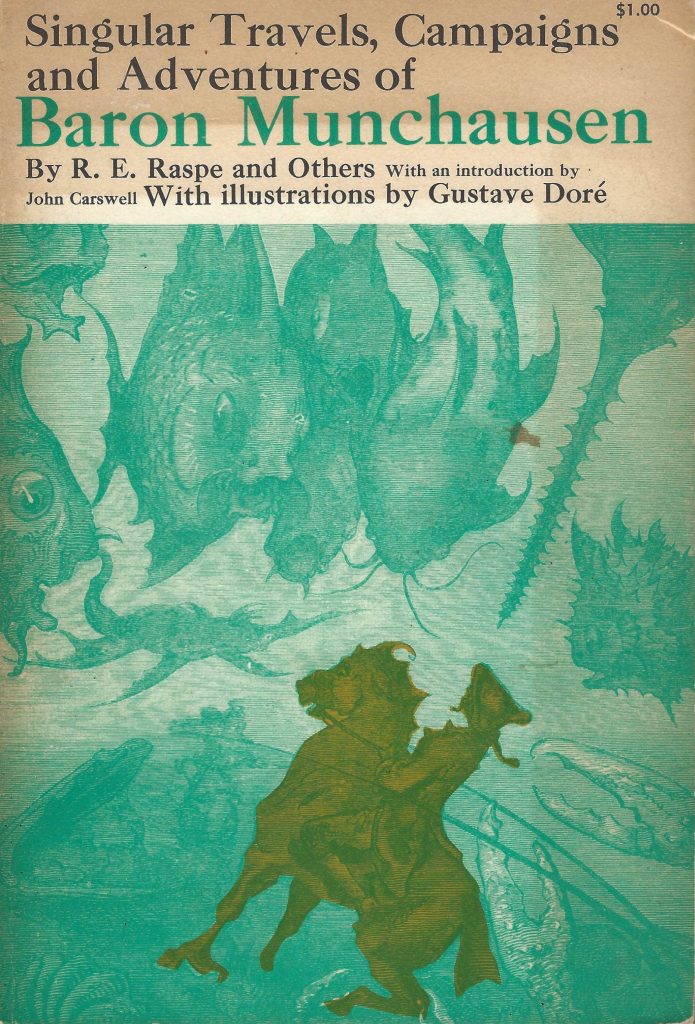 3.Singular Travels, Campaigns and Adventures of Baron Munchausen by R.E. Raspe and Others, 1948
3.Singular Travels, Campaigns and Adventures of Baron Munchausen by R.E. Raspe and Others, 1948
Think carefully before you answer — who is the greatest liar in history? You’re right, of course — it’s Baron Munchausen! In the picaresque novel by Rudolph Erich Raspe, first published in 1785, the nobleman is a nonstop raconteur, spinning stories of his adventures and exploits as a military man and world traveler. Such memoirs were fairly common in the eighteenth century, but few ex-soldiers ever (successfully!) wrestled a forty-foot crocodile, visited the moon by climbing up a beanstalk, rode a flying cannonball over enemy lines, or got swallowed by a great fish while bathing in the Mediterranean (Munchausen freed himself by dancing the hornpipe in the creature’s stomach, which caused it to thrash about and head for the surface, thus attracting the attention of a ship, which harpooned it, hauled it on board, and began cutting it up. “As soon as I perceived a glimmering of light I called out lustily to be released from a situation in which I was now almost suffocated. It is impossible for me to do justice to the degree and kind of astonishment which sat upon every countenance at hearing a human voice issue from a fish, but more so at seeing a naked man walk upright out of his body: in short, gentlemen, I told them the whole story, as I have told you, whilst amazement struck them dumb.”) The actual Baron Munchausen, who fought for Russia in various campaigns against the Turks, spent his retirement entertaining people by telling tall tales about his exploits. Raspe heard some of these yarns and put them into his book along with other outrageous lies of his own invention, which infuriated and humiliated the real Baron, who was driven into seclusion by the ridicule of all Europe. To think that sheer embarrassment could make someone retire from public life; 1785 was a long time ago, was it not? (If you want to read these wildly entertaining adventures, make sure you get an edition that has the original illustrations by Gustave Doré; they are just as funny and delightful as the Baron’s fabulations.)
4. The Iron Dream by Norman Spinrad, 1972
Alternate-history stories come in many varieties, from The Man in the High Castle to Bring the Jubilee to Pavane to Harry Turtledove’s infinitely expanding oeuvre, but few of them are as audacious and original as Norman Spinrad’s foray into the genre, The Iron Dream. The inside-cover blurb lets you know what you’re in for: “Let Adolf Hitler transport you to a far-future Earth, where only FEREC JAGGAR and his mighty weapon, the Steel Commander, stand between the remnants of true humanity and annihilation at the hands of the totally evil Dominators and the mindless mutant hordes they completely control.” That pretty much sums up the plot of the novel (which, once you get past the book’s cover, actually turns out to be titled Lord of the Swastika), and the alternate-history aspect is taken care of by an “About the Author” note at the beginning of the book and an “Afterword to the Second Edition” at the end, purportedly written in 1959 by a New York University academic named Homer Whipple. The bio tells us that after serving in the Great War and briefly dabbling in “radical politics”, Adolf Hitler emigrated to New York in 1919, where he first became a successful science fiction illustrator (for Amazing, no less) and then a science fiction writer himself, the author of such classics as Savior from Space, The Thousand Year Rule, The Master Race, and Tomorrow the World. In the afterword, Whipple chronicles Hitler’s literary career up until his death in 1953, afterwards analyzing Lord of the Swastika and finding in its fetishistic imagery the source of the book’s lasting appeal to hardcore science fiction fans, who awarded Hitler a posthumous Hugo in 1954… so what we have here is not a novel about an alternate history — it’s a novel from an alternate history. How is Lord of the Swastika? (Spinrad reportedly wanted the book to be published under that title, with only Hitler’s name on the cover, but was stymied by his publisher.) Well, based on my own reading about Der Führer (primarily the Bullock and Kershaw biographies, Speer’s memoirs, and Richard Evans’ history of the Third Reich), Spinrad is disquietingly successful at transmogrifying Hitler’s pathological obsessions and rigid, paranoid worldview into pulp science fiction, and one of the most remarkable things about the book is its uncomfortably pointed demonstration of how perfectly the themes and devices of pulp sf suit a violent, authoritarian imagination. In any case, being locked up inside Adolf’s head, even for satirical purposes, isn’t all that enjoyable, and well before the book ends, distaste begins to outweigh novelty, and you’re eager for the “author” to… well, blow his brains out. Spinrad may have been just a little too clever, and The Iron Dream might be one of those books that would be twice as effective at half the length. Still, it’s quite a ride, and I can’t think of another novel like it.
5. Spider Kiss by Harlan Ellison, 1961
Harlan Ellison was one of our best short story writers, but he produced only a few genuine novels. Among that handful, though, is one of his best works, his rock-and-roll novel Spider Kiss (which was originally published by Gold Medal — the mark of quality! — as Rockabilly). Country boy Luther Sellars has an abundance of musical ability and a limitless desire to push, claw, and gouge his way to the top, a vicious, elemental drive unmediated by any trace of scruple. After changing his name to Stag Preston, he succeeds in climbing to the pinnacle of pop music success, becoming the idol of millions. Stag’s unholy combination of ferocious ambition, demonic talent, and unbridled appetite (especially his sexual one) finally lead to his downfall, and after his scandalous excesses (which include some genuine and serious crimes) send him careening to the bottom, he ends his days playing is a sleazy strip joint, far from the big money and the bright lights, mercifully forgotten. Ellison clearly knew the great 1957 Elia Kazan film A Face in the Crowd, in which Andy Griffith excels as Larry “Lonesome” Rhodes, a folksy entertainer whose good old boy demeanor conceals a very nasty streak and who plays out a rise-and-fall story very similar to Stag’s. Stag is, if anything, even worse than Rhodes, and the book is a riveting portrait of a driven and near-sociopathic personality. Ellison later retrofitted many elements of Stag’s character and story onto his script for the 1966 film The Oscar (in which the amoral user is an actor named Frank Fane), a movie so godawful it’s divine.
6. 85 Days: The Last Campaign of Robert Kennedy by Jules Whitcover, 1969
We’ve gotten used to some wild presidential elections over the last decade and a half, but few campaigns in American history were as chaotic, divisive, and ultimately tragic as the one all the way back in 1968. When President Lyndon Johnson announced that he was not going to run for re-election, Robert Kennedy at first publicly said that he wasn’t going to seek the nomination himself, a decision that went against all of his political instincts. It galled him to leave the field to Hubert Humphrey (Johnson’s vice-president and a man likely to continue LBJ’s war policies) and the upstart anti-war candidate Eugene McCarthy, but when McCarthy’s surprising early success showed the potential strength of an anti-Vietnam War candidate, Kennedy threw his hat into the ring. A frantic campaign followed, with RFK scrambling to put together an organization, enter primaries, and make up an enormous amount of lost ground. Along the way, Kennedy earned the animus of McCarthy (for stealing his thunder — and his young, anti-war voters) and Johnson (for opposing his policies), made Kennedy history by losing one primary (Oregon), gained some momentum by winning others (South Dakota, Nebraska), and was called on to help the country weather the shock of the Martin Luther King jr. assassination, a bare eight weeks before his own death at the hands of Sirhan Sirhan on the night he won his greatest victory in California — all in eighty-five days (three weeks less than Vice President Harris had in her own truncated campaign). Whitcover’s book is a definitive account of one of the most dramatic political contests in our history, a kind of combat-photographer snapshot taken at a moment when the country seemed hurtling toward the apocalypse — and not for the last time.
7. The Last Policeman Trilogy (The Last Policeman, Countdown City, World of Trouble) by Ben H. Winters, 2012-2014
If you think things are bad now, take heart — they could be worse. The world could be ending literally rather than metaphorically; there could be a ginormous asteroid on a collision course with earth that will extinguish human civilization on impact, which is the situation faced by Hank Palace at the beginning of The Last Policeman trilogy. The first volume, The Last Policeman, begins with the asteroid (named “Maia”) still six months away and the chances of impact rising but still less than one hundred percent. Before the end of the book, doom has become a mathematical certainty and Palace and everyone else on earth are faced with the Big Question — what do you do when everything is coming to an end? You keep doing your job, of course; it’s that or go crazy in one of a thousand different ways. There’s no shortage of people going that route, but Palace chooses the first option; despite knowing how ultimately futile his efforts are, he continues to get up every morning and show up for work as a Concord, New Hampshire police detective, spending his dwindling stock of days trying to keep his small part of the world from falling to pieces. Through the course of the three books, Palace investigates murders (in a world where the innocent and the guilty alike are about to experience maximum punishment) and a strange disappearance (in a world where increasing numbers of people are walking away from the rubble that’s all that’s left of pre-Maia society) and most personally, trying to find his troubled sister Nico, who has vanished into the chaos; he has some things to settle with her before the end. What does any of it matter? Well, Winters has said the theme of the trilogy is, “Why does anybody do anything?” Each volume (almost each chapter in each volume, in fact) is more involving than the one that preceded it (increasing tension is built into the premise) and aside from being a gripping read, the series really does prompt reflection on the meaning of human actions when the actors are faced with unavoidable death — which we all are, asteroid or no asteroid.
8. 1876 by Gore Vidal, 1976
Electoral chicanery is as old as the republic itself, and who better to describe perhaps the greatest example of it in our history than Gore Vidal, America’s premier historical novelist? In this, the third novel in his six-volume Narratives of Empire series (following Burr and Lincoln in internal chronology), Vidal fictionalizes the centennial election of 1876, when the presidency was stolen from the Democratic candidate Samuel Tilden (remember him? Of course you don’t!) by the Republican Rutherford B. Hayes, or at least by his faction. Post-Civil War bitterness (the tactic of “waving the bloody shirt” to brand all Democrats as crypto-Confederate traitors reached new heights during the contest) led to outrageous underhandedness and outright fraud across multiple states. In South Carolina, for example, 101 percent of all eligible voters voted (take that, electoral apathy!) and many of the things that we’ve become drearily familiar with reared their ugly heads, such as disputed electors, confusing or deceptive ballot designs, and rancorous squabbles about the counting and certifying of electoral votes. With Inauguration Day approaching and the results a snarl beyond untangling, Congress headed off increasing financial and political chaos (to say nothing of threats of violence — Hayes’ home was shot at shortly after Election Day) by creating a special bipartisan electoral commission to reach some kind of resolution, with the result that the Republican candidate became the nineteenth President of the United States… by one electoral vote. (Tilden’s consolation prize was winning the popular vote; I’m sure that kept him warm at night.) All of Vidal’s virtues are on display here; no one depicted drawing-room politics (or any other kind, for that matter) with more elegant irony or acerbic wit. This Jamesian comedy of manners has the kind of effortless style that makes it easy to miss the cold-steel scalpel in the author’s hand, and he uses the knife to mercilessly dissect the corruptions and hypocrisies of Hayes’ and Tilden’s time, and, by implication, our own.
9. The Autumn of the Patriarch by Gabriel García Márquez, 1975
In The Autumn of the Patriarch Gabriel García Márquez uses the techniques of magical realism that he employed in One Hundred Years of Solitude to portray the life and (maybe) death of the archetypal figure of a military tyrant or Caudillo, embodied in a nameless Caribbean dictator. Instead of using the tools of objective realism to depict the surface of his dictator’s reign, García Márquez employs symbol, metaphor and dream to place us in the lightless mind of his radically isolated protagonist. The book (the English translation is by Gregory Rabassa, who also did the magnificent translation of One Hundred Years of Solitude) is not for the faint of heart — it has one sentence that’s fifty pages long. Most of the novel consists of a stream of consciousness that runs so deep you can easily drown in it, but the method yields dividends that couldn’t have been gained in any other way; in one extraordinary, hallucinatory scene, in his greed and callousness the monomaniacal “General of the Universe” (his official title) sells off the Caribbean Sea to the Americans who keep his regime propped up; the Gringos send helicopters to fly off huge sections of the Sea, which has been cut up into numbered squares, leaving only a desiccated, sea-bottom desert behind. The book exuberantly chronicles the General’s flagrant excesses — political, military, familial, financial, rhetorical, sexual — but García Márquez’s greatest triumph is that his art moves us beyond mere externals, imprisoning us in the free-floating abattoir that must have been the mind of a Somoza, a Stalin, a Franco, a Mao.
10. Advise and Consent by Allen Drury, 1959
Though the current confirmation battles roiling the Hallowed Halls of the Capitol may seem especially contentious and nasty, the process of getting even a mildly questionable nominee through the Senate has always been a bloodsport. If you doubt that, just read Allen Drury’s Pulitzer Prize-winning novel, Advise and Consent. (The title comes from Article II, Section 2, of the Constitution, which gives the President the power to appoint various federal officers and officials with the “Advice and Consent of the Senate.”) When liberal golden boy Robert Leffingwell is nominated by the president for Secretary of State, the confirmation process is expected to go smoothly, and it does — until a witness surfaces with evidence that Leffingwell had once been a communist (a charge that the nominee has unequivocally denied under oath). Those in favor of Leffingwell (a group that still includes the president) and those opposed to him begin to frantically maneuver for advantage, working night and day to discredit whatever evidence and witnesses are presented by the other side. Before the drama’s end, the president himself will be involved in blackmailing Utah Senator Brig Anderson, who has proof that Leffingwell’s testimony was a lie. Anderson had a homosexual encounter in his past, and the prospect of that incident becoming public knowledge drives him to commit suicide in his Senate office (a plausible outcome in 1959 — and something very much like it had actually happened in 1954). In the wake of this tragedy, the evidence against Leffingwell gets out, along with the president’s role in its suppression, with the result that the nomination goes down to a decisive defeat. Allen Drury (whom Richard Nixon believed to be secretly gay himself) was a seasoned Washington reporter who knew all the back-room details of how the sausage was made, and after over sixty years, Advise and Consent still deserves its reputation as one of the greatest of American political novels. Drury must have agreed — he wrote five more books carrying the story and characters forward into a shrewdly speculative political future. Otto Preminger directed an excellent film version in 1962, with Henry Fonda as the flawed nominee and Charles Laughton (in his final role) as Senator Seab Cooley, Leffingwell’s most intractable opponent.
11. The Loneliest Campaign: The Truman Victory of 1948 by Irwin Ross, 1968
Everyone loves an incredible comeback staged by a tenacious underdog, right? Well, um… maybe not everybody. But if you crave a candidate wielding a pugnacious (and sometimes profane) campaigning style to present himself as a battler for the common man against out-of-touch elites, if you delight in baffling and egregious polling errors, if you yearn to see a complacent national press stunned by an unexpected outcome that they find simply incomprehensible, then have I got a story for you! No, not that one; it’s not necessary to look back just a month or two, because our grandparents (or great-grandparents!) saw it first back in 1948, when Harry Truman, unanimously written off by the media as a comically inept buffoon, came roaring from behind to defeat supposed shoo-in Thomas E. Dewey for the presidency. Truman, the low-class ward-heeler, the Missouri machine politician who was tapped for vice-president when Franklin D. Roosevelt decided to jettison his previous running mate, the increasingly problematic Henry Wallace, became president when FDR died three months into his fourth term. Shackled by foreign policy problems and an unstable economy, Truman (often derided as “His Accidency”) ended his slightly-shortened first term with near-historically low approval ratings. Good thing polls are never wrong. Dewey, brimming with confidence, decided that it wasn’t necessary to win the presidency; he just had to be careful not to lose it. He therefore confined himself to bland, noncommittal statements that were so general as to be essentially meaningless. The Louisville Carrier-Journal mercilessly (but accurately) said that Dewey’s major speeches “can be boiled down to these historic four sentences: Agriculture is important. Our rivers are full of fish. You cannot have freedom without liberty. Our future lies ahead.” Truman, meanwhile, fought his way off the ropes with a no-holds-barred, bare-knuckle exuberance that, fairly or not, laid all of the country’s ills squarely at the feet of Dewey’s Republican Party. When the dust settled, Harry Truman had won one of the unlikeliest second terms in American history, though it’s probably dropped from first place to second in that regard. The Loneliest Campaign is an engaging look at one of the most colorful presidential contests ever, and the book’s conclusion, written in 1968 about the election of 1948, is just as valuable today: “In the end, the most salutary consequence of 1948 was probably a renewed awareness of the contingent quality of events, of the unpredictability of both leadership in a democracy and of the choices that voters make in the privacy of the voting booth. Not for a long time afterward were politicians likely to take the American voter for granted.” We can hope that recent events have provided a much-needed refresher course in that uncomfortable truth.
12. The Road by Cormac McCarthy, 2006
What do you do when nothing is left of all that you and those who went before you have built but charred rubble and blackened ashes? You hold on tightly to the one most precious to you and make your way through whatever lies ahead one day at a time, trying to keep alive a spark of belief that one day, things will get better. In Cormac McCarthy’s post-apocalyptic novel, a father and a son (we never learn their names; in this place names are needless encumbrances, relics of a dead past) painfully make their way through a shattered world, looking for somewhere they can rest and find peace, knowing that such a place almost certainly doesn’t exist. We don’t know what happened to the world and neither do they. What does it matter? The only reality is trying to keep their bodies and souls alive in a world implacably inimical to both. Most of the devices of the standard post-apocalyptic story are here, images and incidents that have become familiar (even shopworn) through their use in countless books, movies and television shows: searching for uncontaminated water or a slightly better piece of clothing, picking through dead buildings for canned food, exchanging a word or two with other scarecrow-like wayfarers, the dazed, the dead-eyed, the demented, and hiding from other creatures that were once human but that the universal catastrophe has rendered nothing but feral beasts without mercy or compassion. As they push their shopping-cart (their most precious possession, bearing the few pitiful belongings that are everything they own) through this hellscape, “carrying the fire” (an image for preserving and protecting the human that recurs through much of McCarthy’s work), the vision is almost unendurable in its pitiless extremity — but only almost. It is true that no blows are softened, but we are kept going by two things: the bleached beauty of McCarthy’s extraordinary prose and the desperate love of the father and son, who are, quite literally, all the world to each other. Along the way, we get things no other writer could have given us, like the scene where the pair briefly take refuge in a well-stocked underground bunker that they discover, where the father gives his child a drink, a draught from a world and a life that have vanished forever — Coca-Cola. The father’s delight at his son’s stunned amazement at this drink that seems almost alive, followed immediately by his sadness at knowing that his boy will never taste it again, are emotionally overwhelming, as is the book as a whole. The Road will make you weep; it will make your heart ache unbearably before breaking it in pieces, but this bleak journey ends with the fire still burning; at the end, against all odds, the father has passed the flame on by saving his son, and when you finish this remarkable novel, you will feel that light and heat burning anew in yourself.
Of the twelve books I’ve listed here, only The Loneliest Campaign is currently out of print, but it’s relatively easy to find used on Ebay or from other sources; the other books are all readily available in physical or electronic formats.
So, (again repeating my words of eight years ago), “there you have it: a dozen histories, actual and alternate, maps of action or aids to contemplation, to help you get through all the days of farce and folly that lay ahead, as we do our best to cope with the real history that we’re all trapped in.”
Oh, one more thing — I’m damn sure not doing this again in 2028 (or, God help us, 2032)!
Thomas Parker is a native Southern Californian and a lifelong science fiction, fantasy, and mystery fan. When not corrupting the next generation as a fourth grade teacher, he collects Roger Corman movies, Silver Age comic books, Ace doubles, and despairing looks from his wife. His last article for us was Say It Ain’t So
Wolf Games - Book Review by Voodoo Bride (repost + reread)
 Wolf Games (Granite Lake Wolves #3)by Vivian Arend
Wolf Games (Granite Lake Wolves #3)by Vivian ArendWhat is it about:After seven years of total denial, Maggie Raynor s body and her inner wolf are in full revolt. Weak and shaky, she literally falls into the very large and capable arms of the Granite Lake Beta, Erik Costanov. The last thing she wants is a mate, particularly when just looking at another wolf scares her to death. And one as big and sexy as Erik? Really bad idea, no matter what her libido says.
Erik expected to meet Maggie in Whitehorse to escort her to the home of her sister, his pack s Omega. Sheer chance puts him in the right place at the right time to catch her, but the realization that hits him with the force of a full body shot is no accident. She s his mate. An even bigger shock? She wants no part of him not until she resolves her issues.
She ll have to work fast, because they re both selected to represent the pack during the premier sporting event for wolves in the north. Not only will she have to work as a team with Erik, she ll have to face down her fear of wolves. Let the Games begin."
What did Voodoo Bride think of it:This is the third story in the Granite Lake Wolves series and so far my favourite! It's got all the thing that I liked in the first two stories and more. Where in the first two stories the romance won out over the action storyline, here it's a perfect balance and the characters are even more defined than in the earlier stories. There's also more interaction with other characters and that makes the world that Arend build even more lifelike. All in all I can't wait for the last story in this series.
Thoughts on rereading:I still love this story the most out of the Granite Lake Wolf series. There's just something about big, strong, but gentle men that I can't resist. And I really like learning about the bigger world that's painted in this story. I'd also forgotten about TJ, who is a really fun character, and gets his own romance in book 4. Time to dig up my print version of book 3 & 4, as the ebook version of book 4 is probably on my old ereader.
Why should you read it:Romance, action and one big, hunky werewolf!
Triumph and Travesty – 2 Megabuck Page To Screen Adaptations
From Page to Screen, The Godfather Aced Percy Jackson and the Olympians From Lightning to…
The post Triumph and Travesty – 2 Megabuck Page To Screen Adaptations appeared first on LitStack.
SPFBO Finalist Review: By a Silver Thread by Rachel Aaron

ABOUT THE AUTHOR: Rachel Aaron lives in Colorado with her family. She has graduated from University of Georgia with a B.A. in English Literature. She has been an avid reader since her childhood and now has an ever-growing collection to show for it. She loves gaming, Manga comics & reality TV police shows. She also posts regularly on her blog about publishing, books and several other intriguing things.
Find Rachel online: website
By a Silver Thread links: Amazon, Goodreads
ESMAY
Monsters, magic and mayhem abound in By A Silver Thread, a fast-paced urban fantasy romp that practically bleeds with action, trauma and emotional turmoil. Somehow, Aaron manages to put a refreshing spin on the familiar fairy changeling lore, resulting in a uniquely twisted story that is both bloody dark and bloody fun all at the same time.
After falling in love with Rachel Aaron’s writing in the Tear Down Heaven series, I was beyond excited to jump into the interconnected DFZ world for more urban fantasy fun. That said, I was a bit nervous when SPFBOX forced me to start with By A Silver Thread instead of with the Heartstrikers series in in-world chronological order, but I should never have worried.
Within just a few chapters, I felt very immersed in this near-future magical Detroit setting (especially with the backdrop of Halloween), and I never felt like I was missing context from the previous series. Moreover, Lola quickly proved to be a very compelling protagonist as a shape-shifting changeling monster, even if she felt a bit younger than her 27 years. I really liked exploring her intense inner conflict and heavy trauma, and the ticking time clock element due to her rapidly decreasing stash of pills that helped subdue her fairy monster nature added such an addictive air of urgency and looming dread to the narrative.
At the same time, I do think the breakneck pacing of By A Silver Thread ended up hindering my personal enjoyment a bit, as we never fully got to appreciate all the cool world building or just take a moment to breathe and sit in everyone’s tumultuous feelings. While I was never bored, my emotional investment was unfortunately about as thin as a thread, and I really found myself wanting more depth from this intriguing cast of side characters, be they the loveable goodies or deliciously hateable baddies.
The enigmatic Rider was the only character who really stood out to me, and I loved seeing him and Lola (trauma) bond throughout this wild adventure. There is no denying that their unexpected romance developed quite quickly and felt rather rushed, but at least their tender scenes together made me feel some feels, so I welcomed it with open arms.
While most of the big twists and revelations in By A Silver Thread weren’t as shocking or surprising to me as they seemed to be to Lola herself, I did quite like the potential this ending showed for the characters’ journeys in the rest of the series. I will definitely be back to explore the unique DFZ world further, even if it might be in a different series first, and I would highly recommend this action-packed urban fantasy adventure if you want an easy, engaging read that you can effortlessly breeze through in just a few sittings.
ŁUKASZ
Rachel Aaron kicks off her DFZ Changeling trilogy with By A Silver Thread, a fast-paced urban fantasy set in her ever-evolving Detroit Free Zone. It’s a solid start, full of cool magic, intriguing lore, and a likable main character. To me it doesn’t quite hit the heights of her best work, but for the sake of the competition I shouldn't compare it to Rachel's books I read and loved, but as a single entry.
The story follows Lola, a faery changeling trapped under the thumb of her blood mage master, Victor. Bound by magic and dependent on his pills to keep her human form intact, she’s left scrambling when Victor vanishes. Without the pills, she risks dissolving into nothing—and worse, taking her sister down with her (now, the sisterhood is not typical and it's best to understand it by reading the book). We get a tense, fast-moving mystery as Lola races to survive, solve Victor’s disappearance, and confront her own monstrous nature.
Lola is a great protagonist, likable and relatable, and I think Aaron has written her well. I appreciated her struggle to maintain her humanity despite years of abuse, and her rebellious spirit. Her shapeshifting abilities, which depend on belief to hold their form, are creative and cleverly tied to her story. However, her characterization can feel a bit surface-level at times—her growth is satisfying but predictable, and she doesn’t quite stay in your mind the way some of Aaron’s past leads do.
The world-building is, as always, a highlight. Aaron’s DFZ feels alive, and the addition of faery lore fits the setting. Longtime fans will appreciate the nods to her previous series, while new readers should still find the story accessible, though they might miss some of the nuance.
That said, the book stumbles a bit in its pacing. The tension builds well thanks to the countdown mechanic with Lola’s pills, but the plot can feel a little rushed, and some supporting characters—like the enigmatic Black Rider—don’t get enough space to shine.
Overall, By A Silver Thread is an entertaining, if slightly uneven, start to the series It’s not Aaron’s strongest work, but with its creative magic and heartfelt moments, it’s well worth a read for fans of the DFZ or urban fantasy in general. A solid 7.5/10-good, but not unforgettable.
MIHIR
Rachel Aaron’s books are like a soothing balm to my soul, they are full of fun scenarios, charismatic characters, incredible magic systems and plots which are ingenious to say the least. Since Rachel first introduced us to the DFZ world nearly nine years ago, I along with a ton of other readers were hooked on to the crazy, multi-genre story. Plus dragons just make everything epic and that was indeed the case here as well.Since the completion of the Heartstrikers saga, Rachel had written a sequel trilogy that was more grounded but fun nonetheless. But this time around Rachel while taking another trip back, is going a little more in-depth into the lore of the world. So begins By A Silver Thread, the first book in the DFZ Changeling trilogy and we are yet again brought in to the world of the DFZ to explore another angle and a different type of magic. This book is set nearly five years after the events of The D.F.Z. trilogy and immediately in the beginning; the readers are introduced to Lola, a faery changeling that was exchanged with a human child.
By A Silver Thread introduces a DFZ world wherein human magic is now on the upswing thanks to the events of the Heartstrikers saga & DFZ trilogy. This book is set twenty five years after the events of Last Dragon Standing & five years after Night Shift Dragons, Lola is a changeling with some really cool powers but in thrall to an evil blood mage named Victor Conrath. He keeps her on a short leash with his blood that allows her to maintain her human form as otherwise she will revert to being a literal monster (a state which she abhors). She is also linked by a magical silver thread, which encircles her left wrist and is magically connected to the human girl whom she replaced (whom she calls and believes to be her real sister).
The main plot starts with the abrupt disappearance of her blood mage master and her frantic search for him as she has only a few pills remaining to keep herself human. Lola is forced to figure who truly is behind her master’s disappearance while desperately trying to keep herself from dissipating without the support of his Blood Magic. By A Silver Thread does something masterful with its subject matter as it’s about Lola’s will to survive and not become what she absolutely is terrified of. However, the main genius of the story lies within the fact that it introduces Faeries and Fae magic to the world of the DFZ. It also is done in such an elegant manner that it does not break any magical rules and the history that has been set up by the preceding eight titles that have been released so far. This was truly amazing from a reader’s perspective and a tip of the hat to the author for keeping her world mythos precise.
The main gist of the story is all about mysteries. Who or what is Lola exactly, who has kidnapped or killed her master? What will happen to her when she runs out of her pills? Who are the Fae and what is their eventual aim? All of this and more is gloriously revealed in this new trilogy opener and once again we are charmingly brought back in to the world of DFZ. Lola as a main character is such a fascinating one and she’s probably the first non-human protagonist that Rachel Aaron has focused upon (Yes I’m aware she has a novel set in space under her Rachel Bach pseudonym and technically Devi is a human from a different planet). But what sets Lola apart is that she’s a magical thing who isn’t supposed to exist. She however does and adopts a human form in honour of her lost sister. She’s empathetic and strong under a lot of duress. She has been psychologically abused by her master and yet he has been unable to strip her of kindness and humanity. This was such a refreshing thing to read and while Rachel has written optimistic characters before. Lola here seems to be a special case based on all that she has endured.
A plus about this book was the villain and I have to hand it to the author. She has created a very detestable character, possibly the worst one she has written so far amidst the 24 titles she has released. That’s something special as usually Rachel Aaron almost always makes her villains not entirely evil to a hilt. But here we finally get a proper, horrid person whom everyone can rightfully hate.
Another cool aspect of the story was the rapid plot pace and the tension that was strewn throughout. The author did a cool reverse countdown with the chapters about the remaining pills that Lola had. I really liked it as it reminded me a lot of Jeffrey Deaver’s thrillers wherein there’s a similar countdown that ratchets up the plot tension. Lastly the ending is a proper emotional one. I distinctly connected with Lola’s struggles and I wish for her to succeed. However the stakes are deeply against her. I can’t wait to see in the sequels what happens and how it all unfolds. There are also some cute nods and messages about the previous stories’ characters and they are there for the fans to enjoy.
By A Silver Thread is a superb return to the world of the DFZ. This is a heroic story that is in parts heartwarming, in parts mysterious and just a fantastic read all the way. I know at this point, it’s hard for me to keep coming up with superlatives for Rachel Aaron’s books but trust me, this is the start of a special story. Grab a copy now and join me in finding out why Lola deserves all of your attention and love.
OFFICIAL SPFBO SCORE



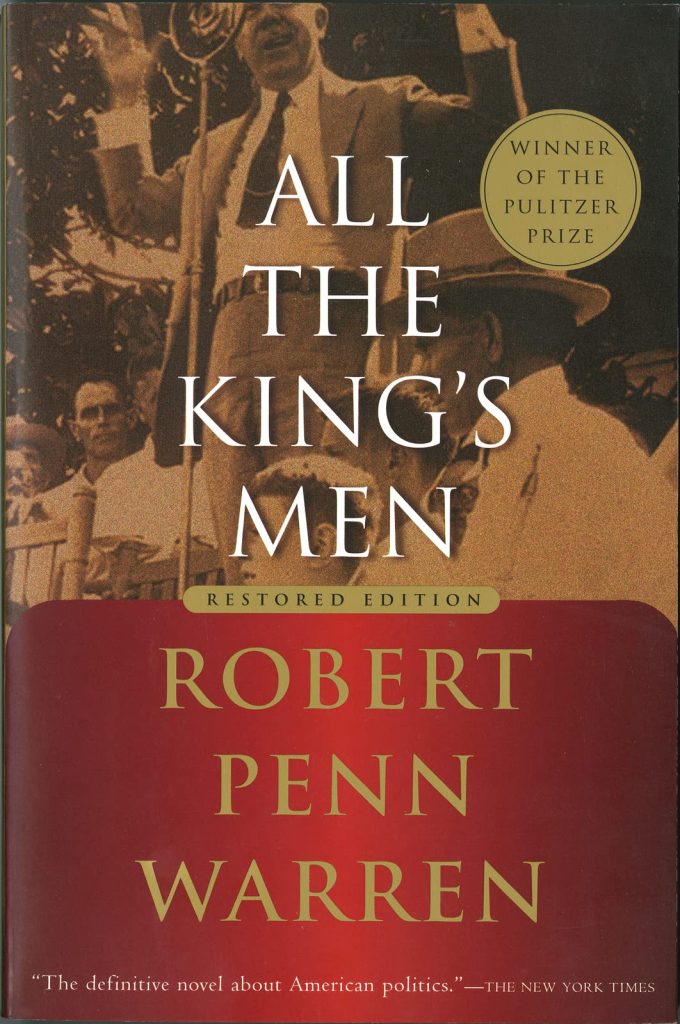
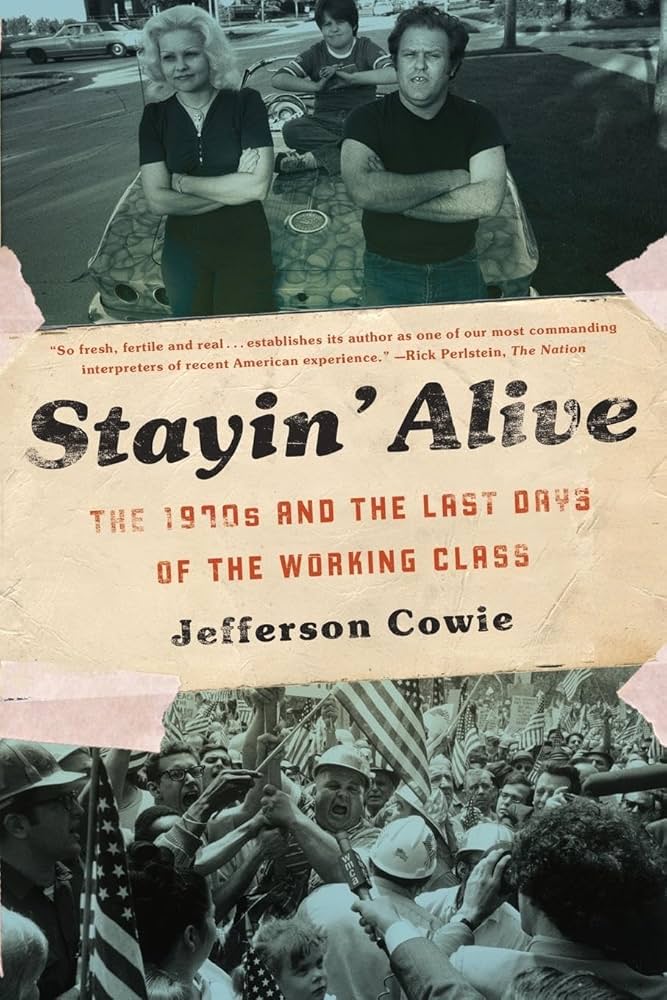
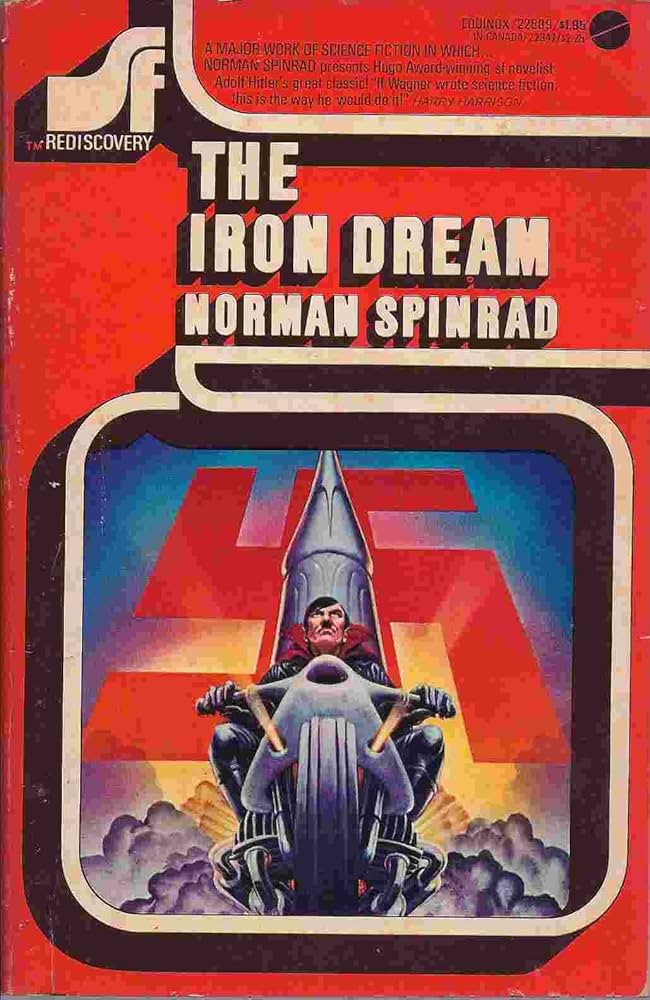


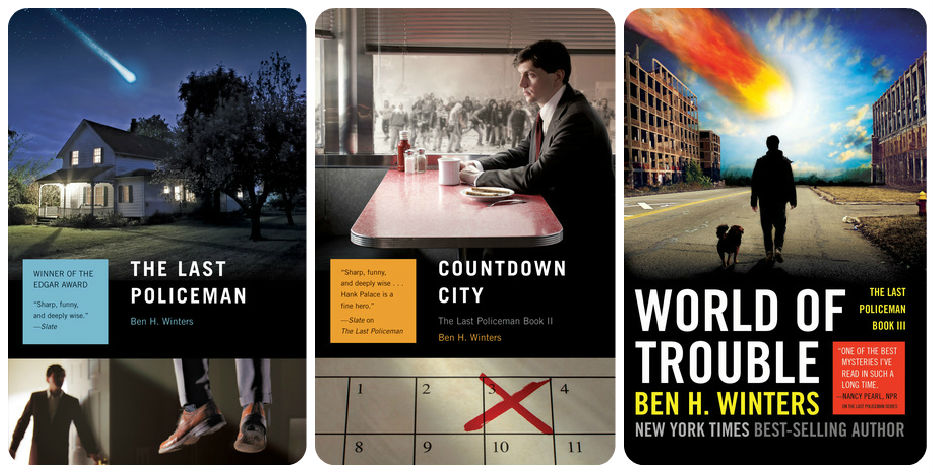
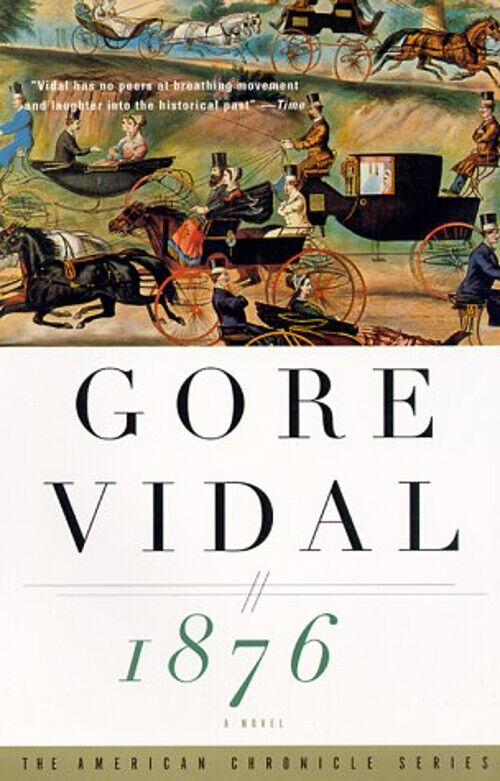
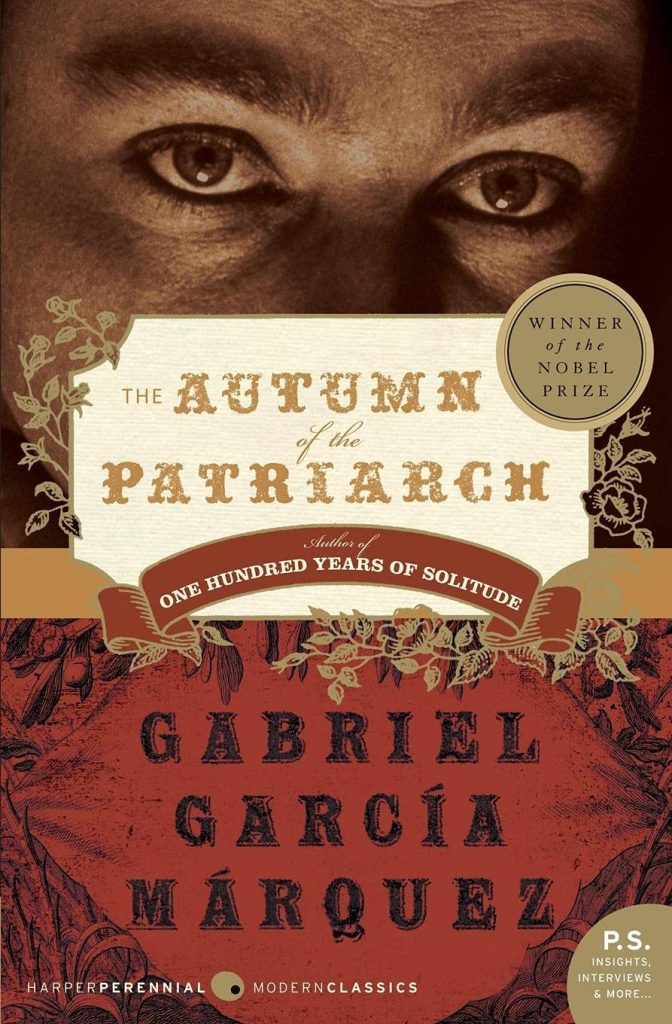
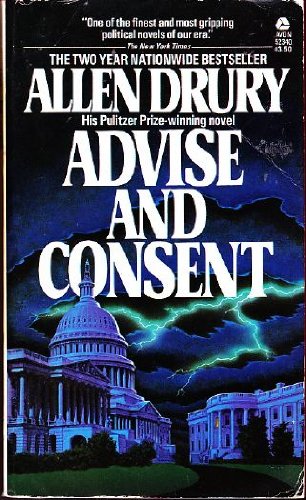
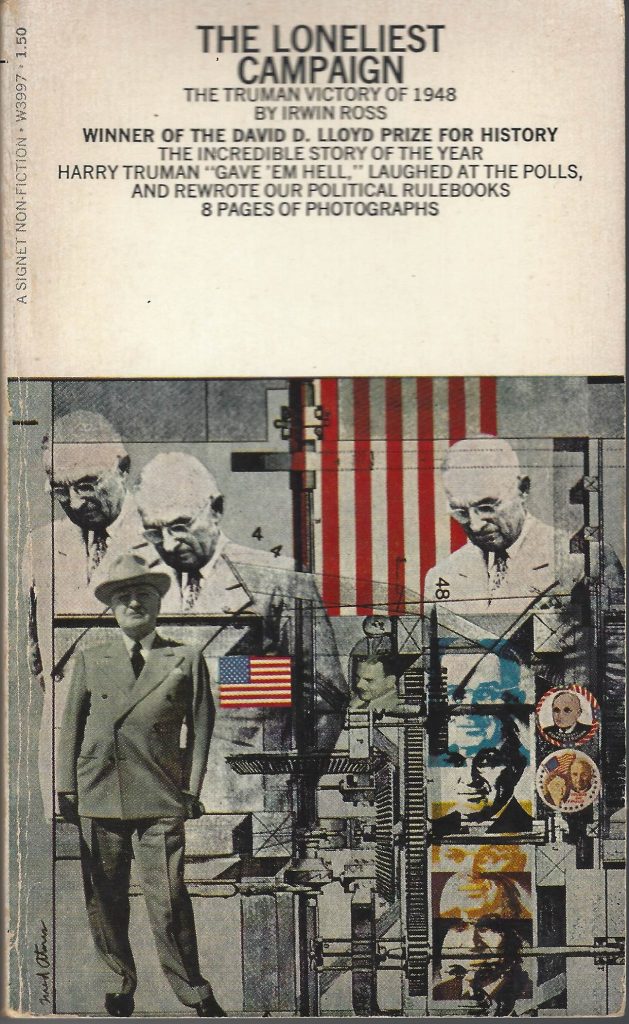
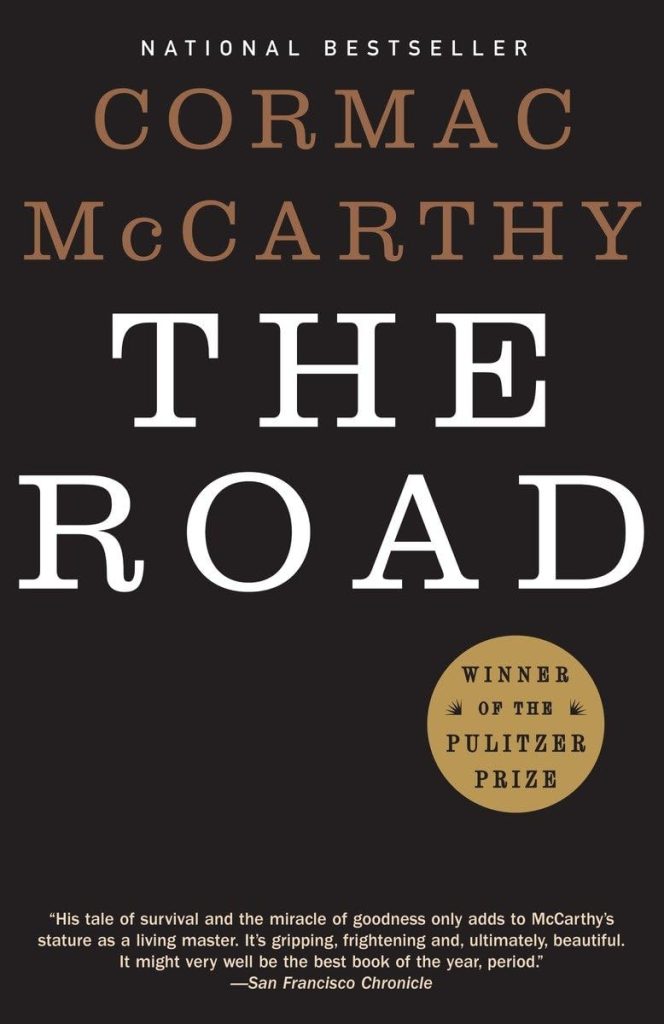

Recent comments